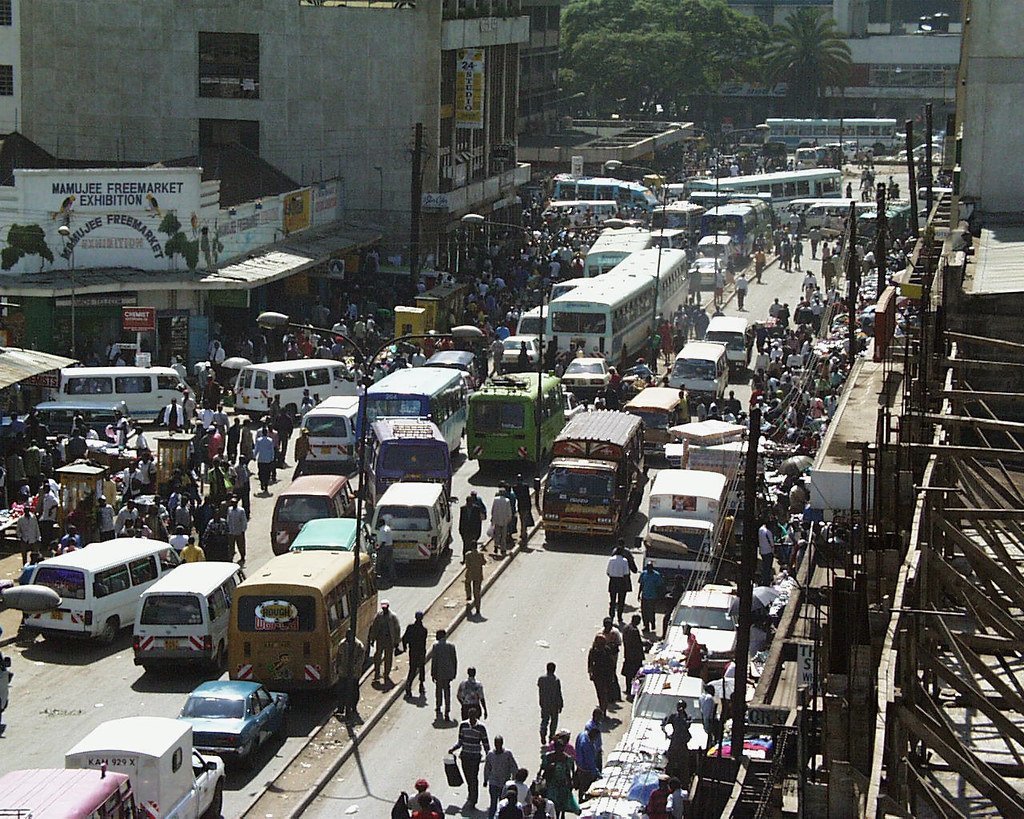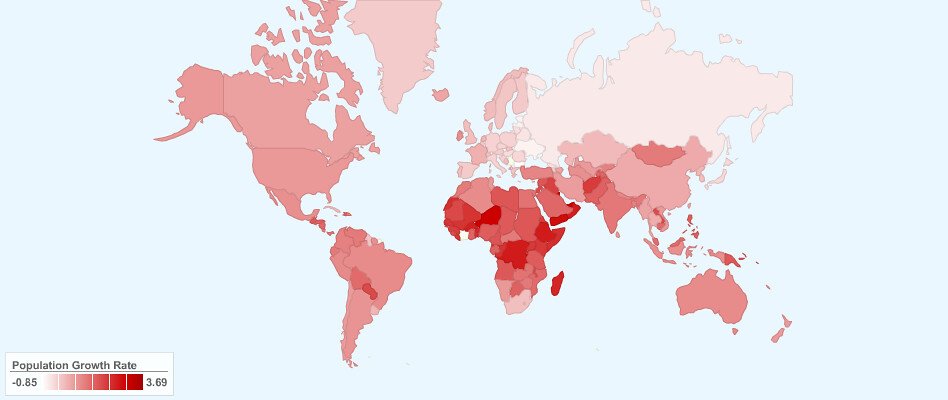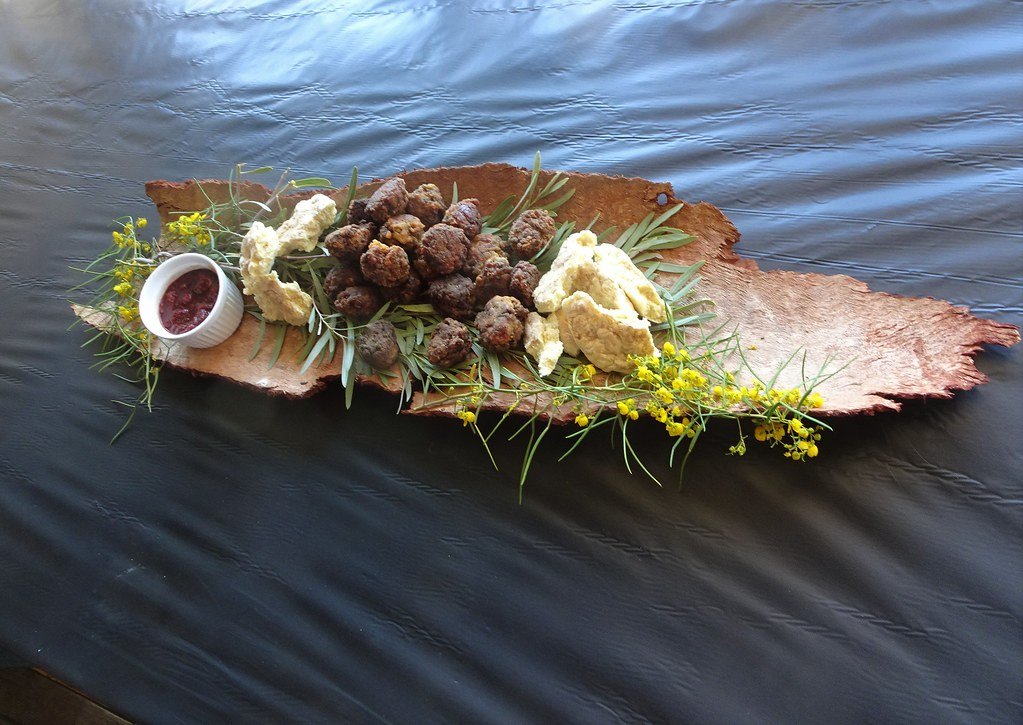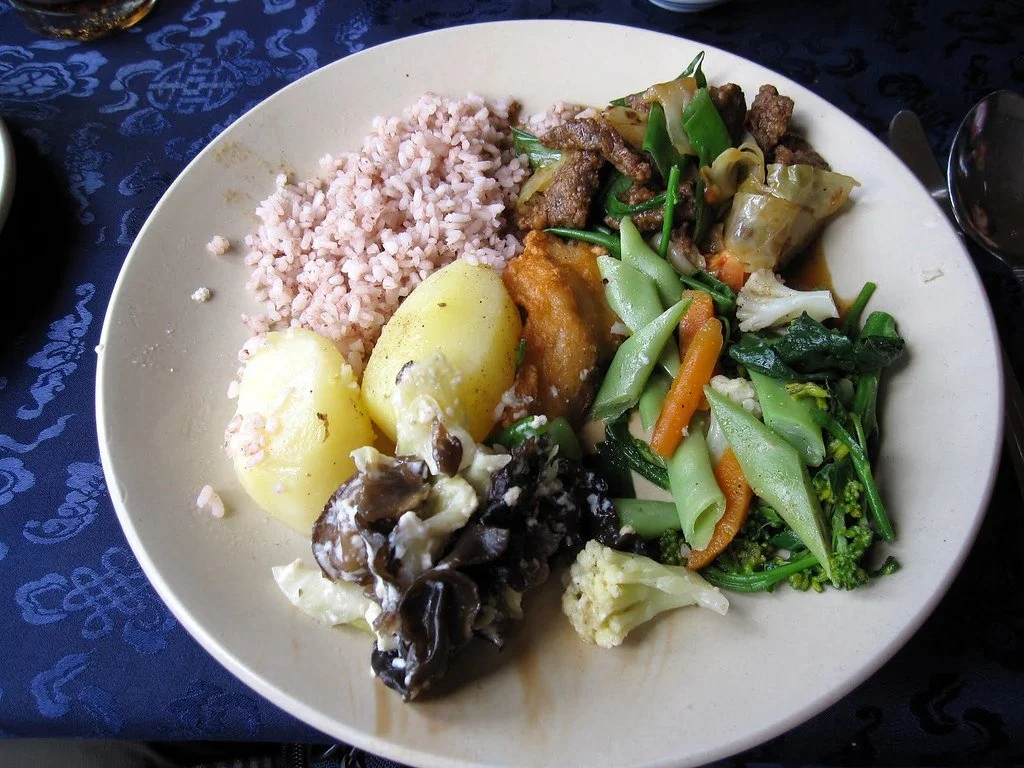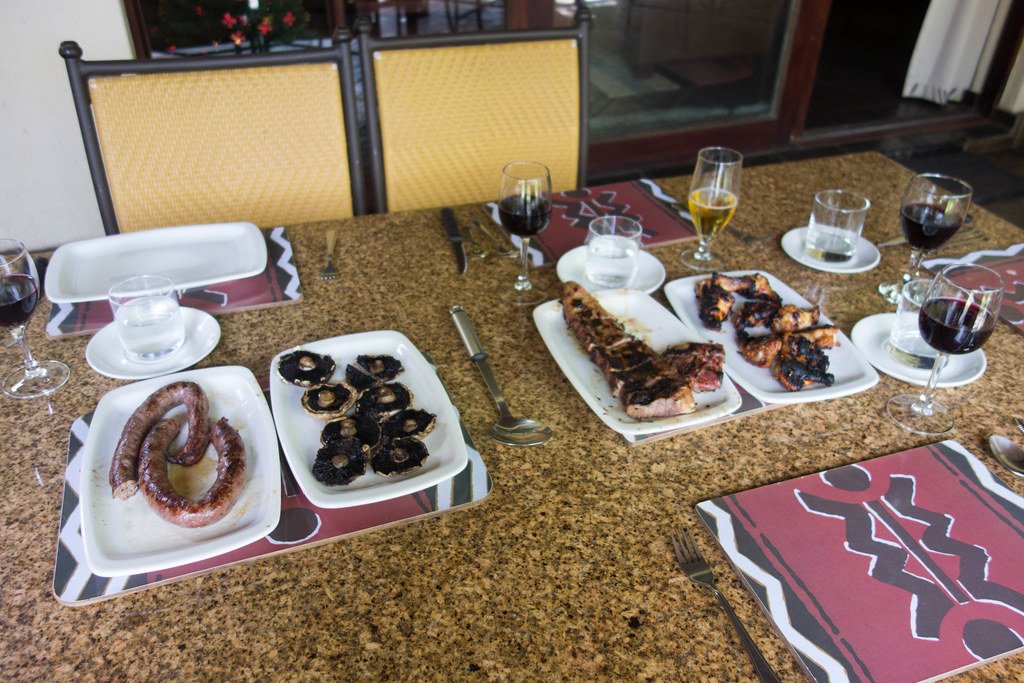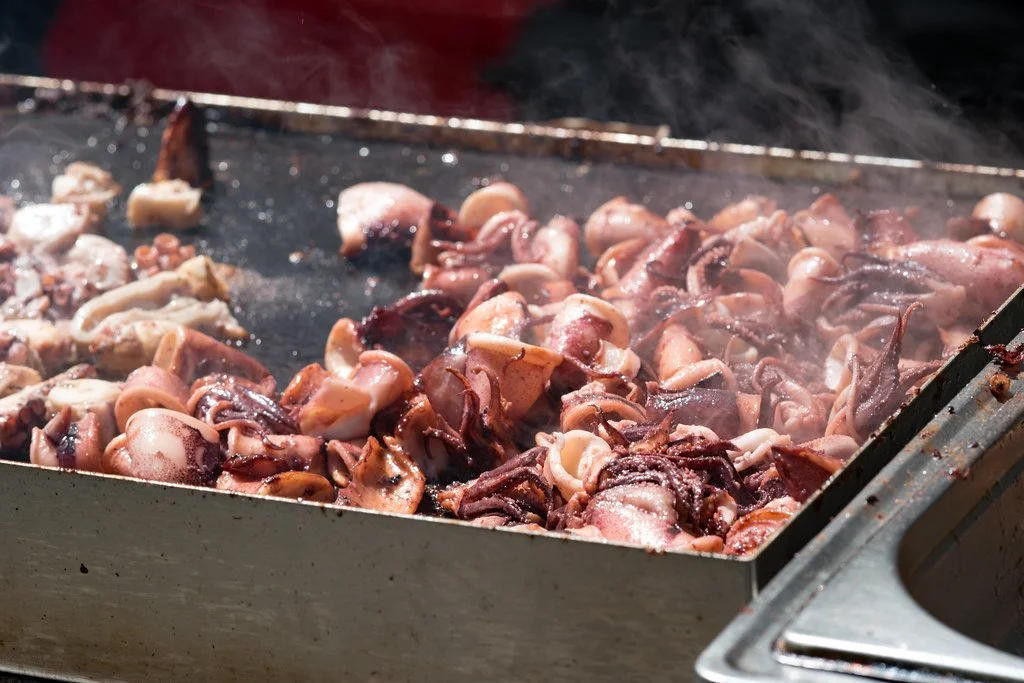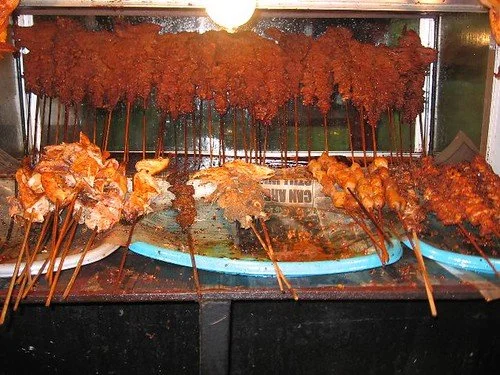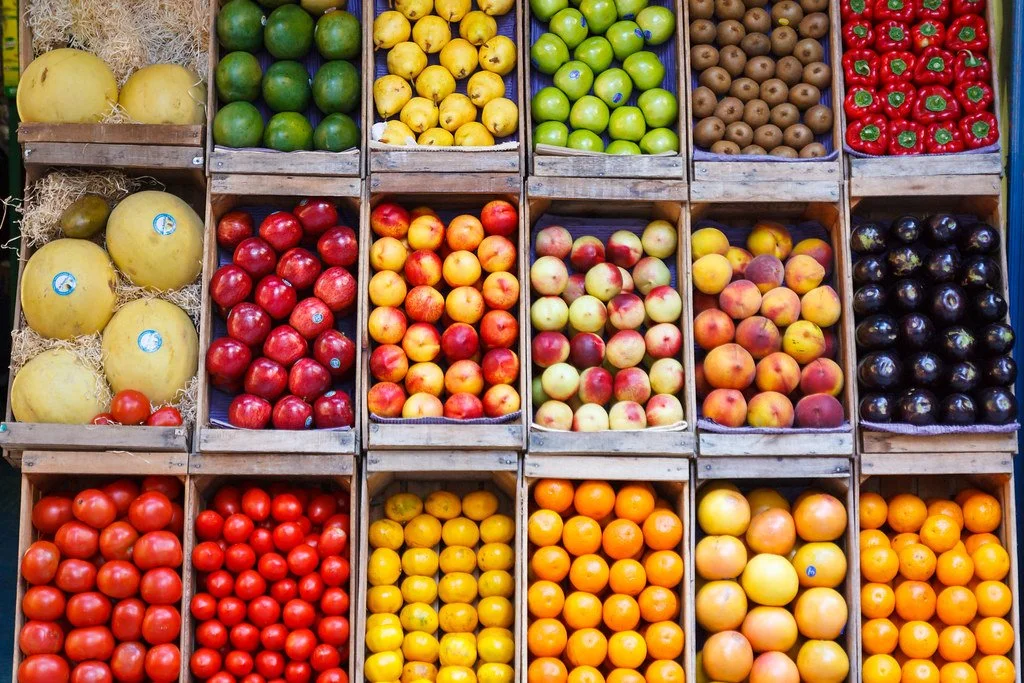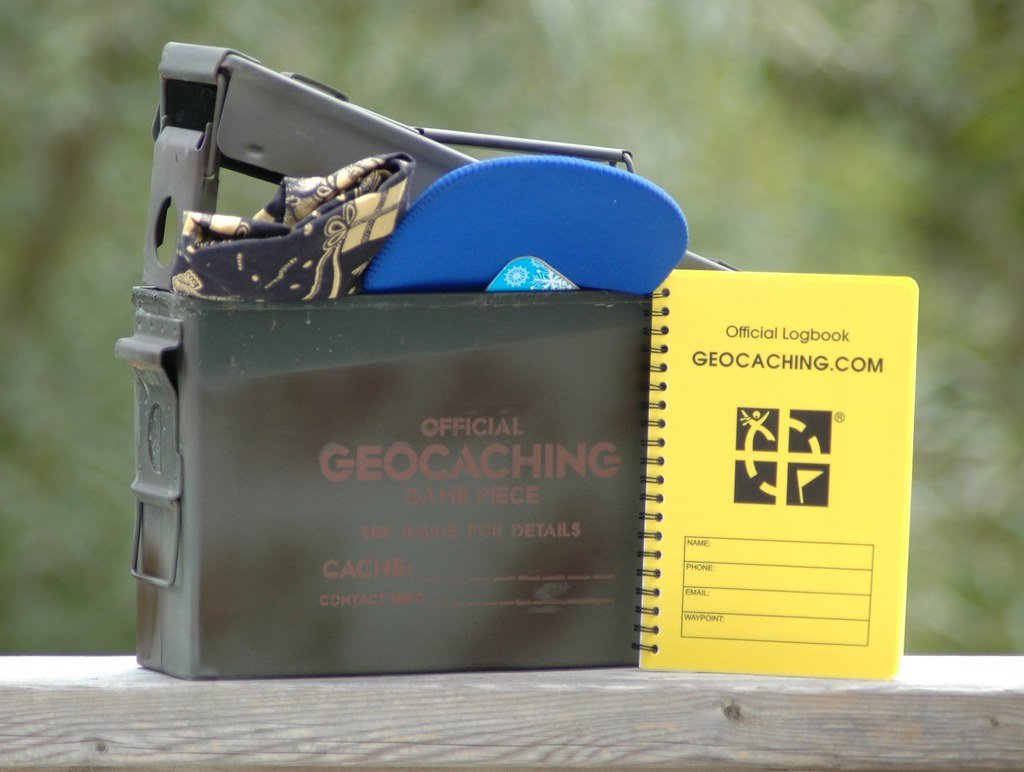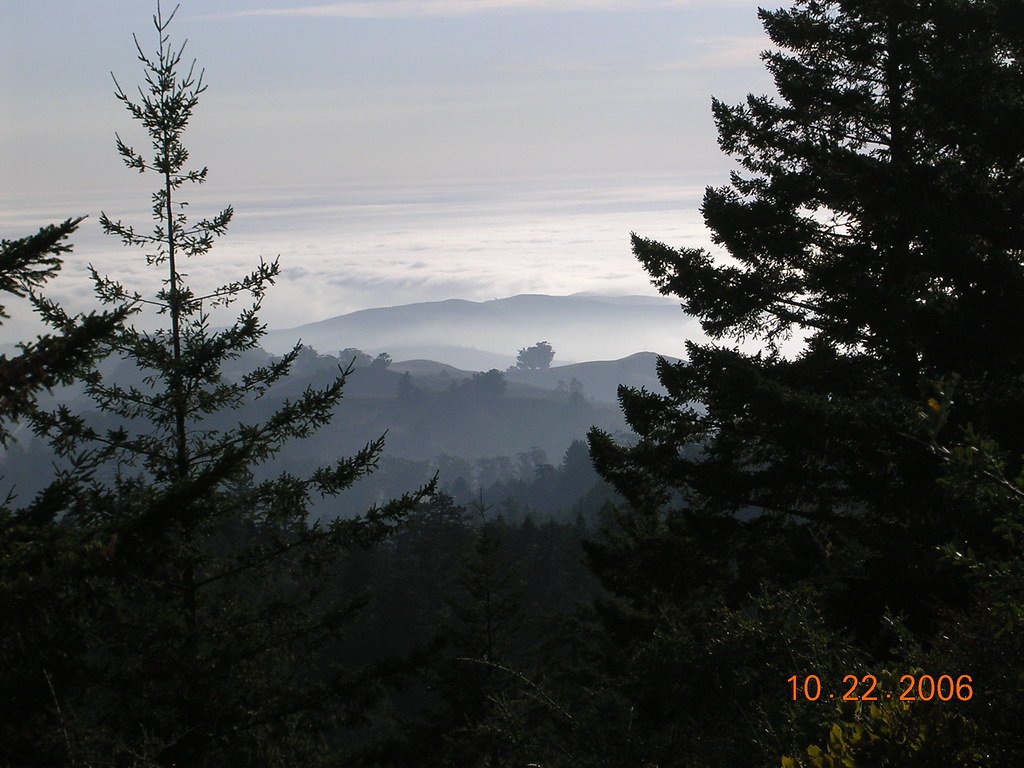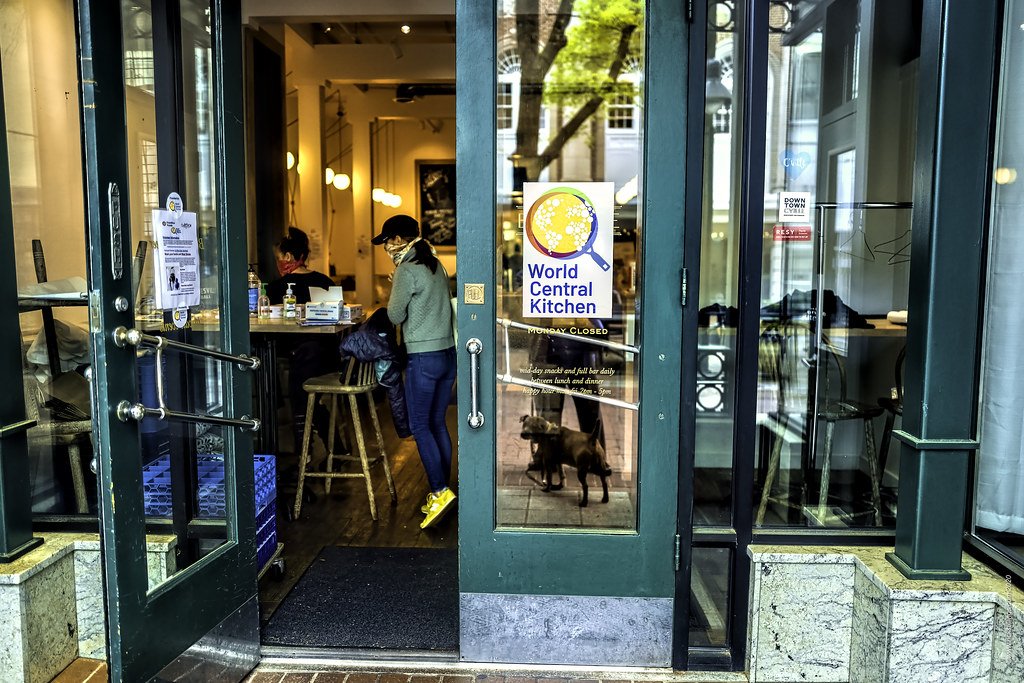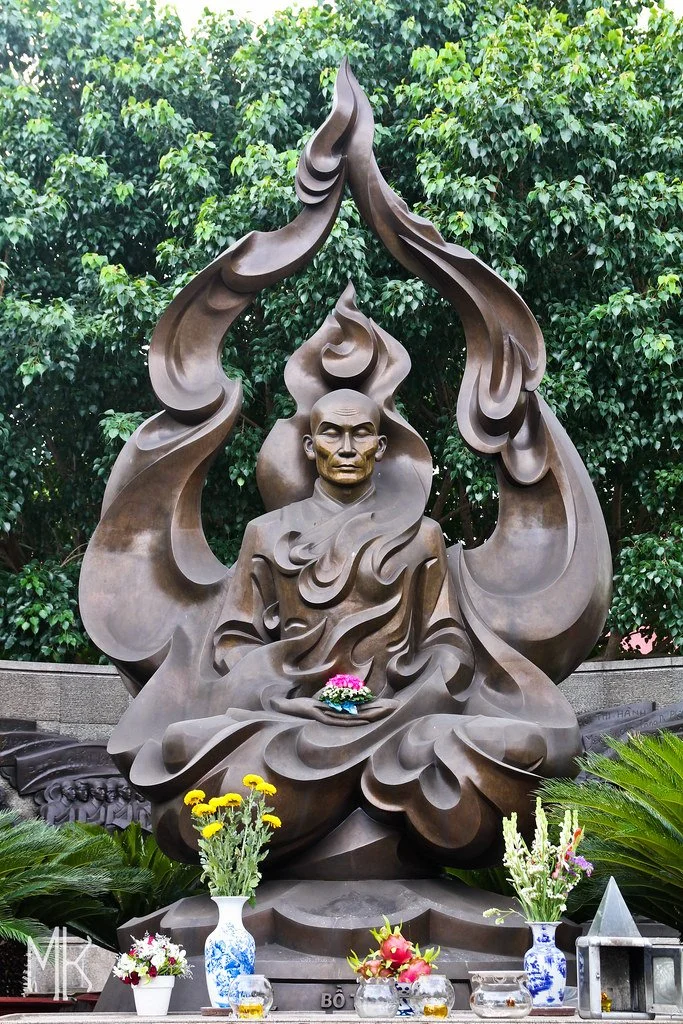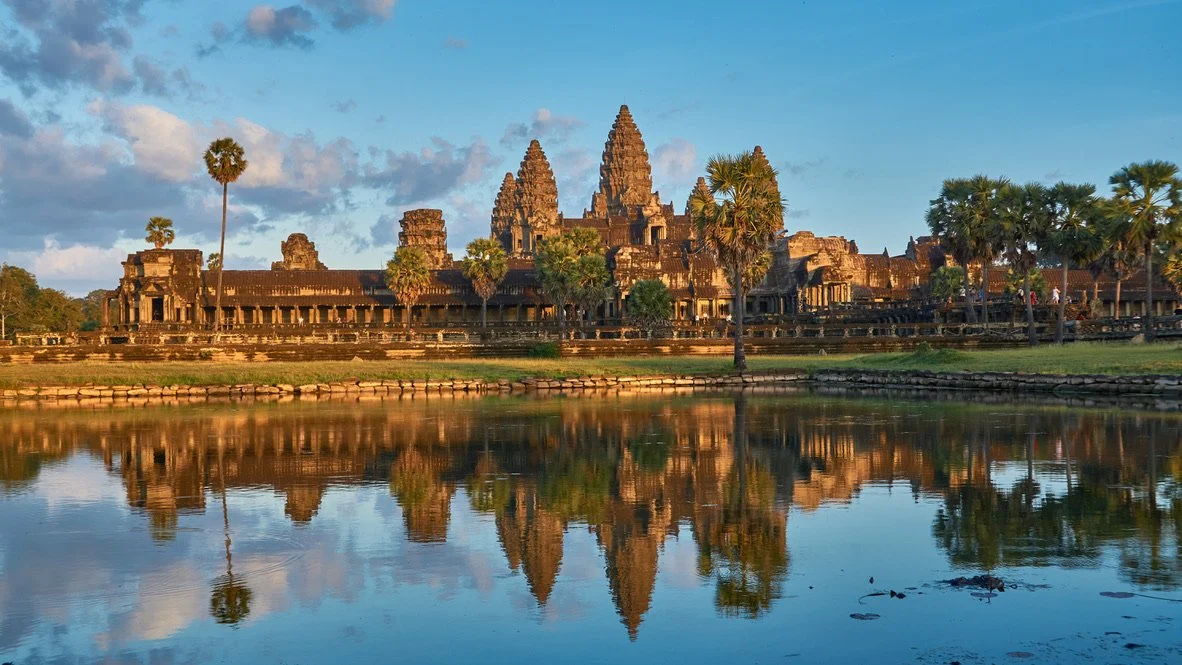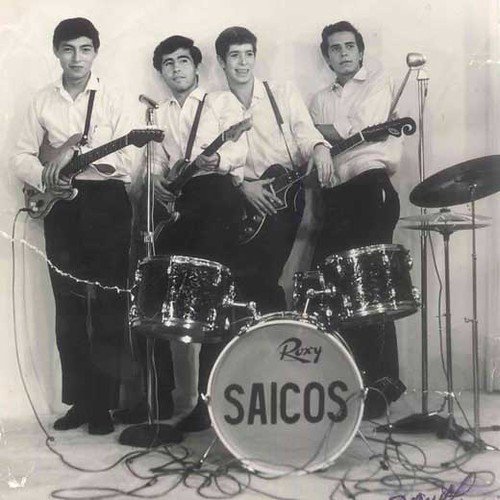Bangkok, or Krung Thep, “The City of Angels”, is the capital of Thailand and home to more than 10 million people. The city is a composite of temples, factories, cultural sites, residences and shops. Emerging from political unrest in the 1990s and early 2010s, Bangkok has become a popular destination in its own right; gone are the days when travelers viewed the city as a simple pitstop on the way to Thailand’s beautiful beaches and islands. Escaping “from the typical travel videos that are usually made about Bangkok,” director and scriptwriter Jiajie Yu, based in Barcelona and Madrid, provides a glimpse into the everyday lives of Bangkok’s residents. He showcases “Bangkok in a cinematographic way,” introducing us to the quotidien and silent moments of a city that is usually portrayed as teeming with bright lights and action. Through “faces, alleys, sounds, and music,” Yu creates a subtle yet mesmerizing depiction of Bangkok.
The Islands of Hong Kong: Hidden Oases Next to a Bustling City
Hong Kong is known as an urban center, but just a short ferry ride away from downtown are traditional fishing villages and untamed beaches waiting to be explored.
Tai O village, sometimes called the Venice of the Orient. Christian Junker | Photography. CC BY-NC-ND 2.0.
Hong Kong is a city of contrasts. It is where crowded slums stand next to glimmering skyscrapers, where its British legacy endures proudly with its Eastern roots, where poverty lives alongside some of the greatest riches in the world. It is also one of the most densely populated cities, with a population density of 17,311 people per square mile, packed inside a small urban center surrounded by mountains and outlying islands.
But right outside the hustle of businesspeople lies a different side of Hong Kong. In some of the outer islands, just 10 away from Central, people live simple lives, sustaining themselves by fishing. Other islands are completely free of development and offer secluded beaches. These islands are part of the New Territories, which is included in the land that make up Hong Kong but have been largely free of development until recently. Nevertheless, it is possible to seek solitude just a short ferry ride away from the heart of Hong Kong, whether it is for a unique cultural experience or for a thrilling outdoor adventure.
Lantau Island
The Big Buddha statue, located in the interior of Lantau Island. Harald Felgner. CC BY-NC-SA 2.0.
While Lantau Island, the largest in the special administrative region, is the location of the city’s airport and has some development on its northern side, the interior and southern side of the island holds quaint villages and massive religious monuments. In the interior of the island, one can find the Po Lin Monastery, a Buddhist monastery established in 1906, and the Big Buddha statue, a massive bronze sculpture of the Buddha completed in 1993. Taking inspiration from ancient Buddhist art forms, these sites offer a great opportunity to learn about the religion’s tradition. These sites are accessible via the Ngong Ping 360 cable car, which takes riders up the mountains from a commercial center near the airport.
On the western coast of Lantau Island lies the village of Tai O, a fishing village partially built on stilts over the water. The villagers there hold on to their traditional way of life, resisting the integration of their lives into modern Hong Kong society. Visitors to the village can experience an authentic fishing village unaffected by the hustle of modern society. Besides trying out the local cuisine, visitors can also take a boat tour to try to spot the endangered Chinese white dolphin.
Cheung Chau Island
Tung Wan beach. Lewi Hirvela. CC BY-NC-SA 2.0.
A 45-minute ferry ride from Central, Cheung Chau Island offers an adventure for all types of travelers. The island has a long history, being inhabited since prehistoric times. Ancient rock carvings left on the island by its earliest inhabitants have been declared as a monument of Hong Kong. In the 18th century, the island was the site of a pirate hideout. Today, the Cheung Po Tsai cave, where some booty of the pirate of the same name has been hidden, is open to the public to explore.
For those who prefer chilling on the beach, there are two public beaches on the island. Tung Wan beach, located at the heart of the island by the main village, offers soft sand, showers and changing rooms, concession stands, and all the amenities of conventional beach. The other beach, Kwun Yam, is a bit more out-of-the-way, with a smaller swimming area and coarser sand. However, it is the windsurfer’s paradise and was the training ground for Olympic windsurfing champion Lee Lai-Shan, who earned Hong Kong’s first gold medal in the 1996 Atlanta games.
Lamma Island
The floating fish farm rafts of Lamma Island. Trey Ratcliffe. CC BY-NC-SA 2.0.
More laid back than Lantau and Cheung Chau, Lamma Island offers an idyllic landscape. There is an extensive network of paths that takes visitors to a variety of sites around the island, from Hung Shing Yeh beach to the Tin Hau temple. That temple is a prime example of the East-meets-West theme seen throughout Hong Kong; the otherwise Eastern-style temple is guarded by two statues of Western-style lions.
At the Sok Kwu Wan village, visitors can learn about the island’s fishing tradition. The Lamma Fisherfolks’ Village showcases the local fishing culture and history in Hong Kong for visitors. Floating fish farm rafts are spread out across the bay. A trip to Lamma cannot be completed without eating at one of the local restaurants, which serve freshly caught seafood from the island’s waters.
Po Toi and Tung Ping Chau Islands
The rocky coastline of Po Toi Island. Eddie Yip. CC BY-SA 2.0.
These two islands are for the more adventurous types of travelers. They are free from development. Po Toi, the southernmost of Hong Kong’s islands, is completely off the electrical grid, with its few buildings getting electricity from a small generator. This rocky island has many hiking trails, including one to Nam Kok Tsui, the southernmost point in Hong Kong. For the more brave, Mo’s Old House, an abandoned mansion built in the 1930s, is said to be haunted.
Similarly, Tung Ping Chau island, in the remote far-northeast corner of the special administrative region, is also undeveloped. Unlike the rest of Hong Kong, it is composed of shale, resulting in an interesting geologic pattern. While the east side of the island has a sandy beach used for diving, the main focus of the island is its unique rock formations. The special geologic formations have made it a place of scientific interest. Today, it is a part of the UNESCO Global Geoparks network.
Bryan Fok
Bryan is currently a History and Global Affairs major at the University of Notre Dame. He aims to apply the notion of Integral Human Development as a framework for analyzing global issues. He enjoys hiking and visiting national parks.
The Efforts to Rid Italy of Organized Crime
Images of the Mafia are ingrained in the public imagination of Italy. However, steps have been taken to eliminate it, making the country safer than in prior generations.
A protest banner erected after the murder of Peppino Impastato that says, “The mafia kills; so does silence.” ragnagne. CC BY-SA 2.0.
The proliferation of movies and television shows on the subject have caused some Americans to associate Italy with the Mafia. While it is true that organized crime is still causing headaches to law enforcement today, organized crime in the country is much more than just the Mafia, which is confined to Sicily. Other criminal organizations exist, such as the ‘Ndrangheta in Calabria and the Sacra Corona Unita in Apulia. The Camorra, which is based in the region of Campania and the city of Naples, is notable for using illicit methods to gain control of building contracts and garbage disposal, allowing them to control a large portion of Neapolitan society. Their negligence has also resulted in a lack of garbage collection services, causing large piles of trash on the streets to the ire of many residents of Naples.
Each of these organizations operate somewhat differently, but they are all powerful players in the international drug trade. However, great strides have been made to eliminate their threat.
Some of the criminal organizations have their roots in the 18th century, when southern Italy was under Spanish rule. They prospered in the 19th and early 20th century, bribing politicians to ignore their activities. Sporadic but well-intentioned efforts emerged in the late 20th century to curb their influence. In the 1970s, Peppino Impastato emerged as a lone voice in questioning the tight grip the Sicilian Mafia held on his hometown of Cinisi, mocking them in his radio show, but it resulted in his murder in 1978. The Maxi Trials, the largest trial to occur in history, lasting from 1986 to 1992, resulted in the conviction and sentencing of 338 Mafia members. However, the aftermath of the trial showed that there was still a long way to go; the two judges leading the trial, Giovanni Falcone and Paolo Borsellino, were killed shortly after its conclusion.
An Addiopizzo branded T-shirt, encouraging critical consumption by only supporting businesses that do not pay extortion money to the Sicilian Mafia. Addiopizzo Travel. CC BY-NC 2.0.
Today, interventions with widespread community support have been more successful in limiting the reach of organized crime. A more recent push includes more grassroots efforts, such as Addiopizzo, which is the movement for businesses to refuse to pay extortion money, called “pizzo,” to the Mafia. Businesses had traditionally paid the Mafia money to be left alone, but in 2004, a group of young university graduates started the campaign to end the practice. Soon, the entire Palermitan community was in solidarity with them, causing untold misery to the Mafia bosses still operating by cutting their main source of income. Relying on the slogan, “An entire population that pays the pizzo is a population without dignity,” Addiopizzo has galvanized Sicilian society to push back against paying the Mafia.
Now based in several organizations in both Palermo and Catania, two major cities in Sicily, Addiopizzo is encouraging ordinary people to only buy from places that do not pay the pizzo. Stores that refuse to pay the protection money are labeled with a sign that says, “Pago chi non paga [I pay those who do not pay].” The organization Addiopizzo Travel also provides visitors to Sicily with sustainable accommodations and encourages them to frequent those businesses.
Negligence by the Camorra, the criminal organization of Naples, has caused trash to pile on the streets. chrisjohnbeckett. CC BY-NC-ND 2.0.
The government is also taking action against organized crime. With the public getting tired of the control over garbage disposal by the Camorra in Campania, the governments of some cities are taking action. In the city of Castellammare, near Naples, the government is cutting off all contracts with the Camorra, while insisting it “will not stop the city” by doing so. The city prefect is going even further by declaring that “unwelcome people are not even candidates” for mayor.
To fully eliminate the threat of organized crime in Italy, however, their effects must be addressed. The organization Libera. Associazioni, nomi e numeri contro le mafie works to invest in education to spread knowledge of the extent of the networks of organized crime. It also repurposes property confiscated from criminal organizations for social uses by the community, helping to mitigate the effects of organized crime. The combination of grassroots, governmental and nonprofit movements ensure all aspects of organized crime are being eliminated.
Bryan Fok
Bryan is currently a History and Global Affairs major at the University of Notre Dame. He aims to apply the notion of Integral Human Development as a framework for analyzing global issues. He enjoys hiking and visiting national parks.
Kyrgyzstan: From the Silk Road to the Celestial Mountains
A Central Asian country not known for its tourism, Kyrgyzstan boasts three Unesco World Heritage Sites. Each differs greatly in terms of its cultural significance, all providing different experiences for a traveler.
Wildlife in Kyrgyzstan. Charles Fred. CC BY-NC-SA 2.0.
Kyrgyzstan is known for its beautiful scenery; for example, there are two stunning canyons in Kyrgyzstan: the Fairy Tale Canyon and the Konorchek Canyons. The Kyrgyz people lived a nomadic lifestyle well into the 20th century, and aspects of this rich culture are still recognizable in architecture today. For example, a traveler to Kyrgyzstan can see a Bozui house—a type of architecture distinct to the Kyrgyz—and learn how it is built. In terms of the UNESCO World Heritage Sites, the three sites are deeply historically and culturally significant, as well as breathtaking.
1. The Chang'an-Tianshan Corridor of the Silk Road
Section of the Great Wall of China in Kyrgyzstan. Matt Barber. CC BY 2.0.
The Chang’an-Tianshan Corridor is a section of the Silk Road, the most used collection of trade routes during ancient times, which primarily connected China with countries in Europe, the Middle East and East Africa. The Chang'an-Tianshan Corridor was named a UNESCO World Heritage Site in June of 2014, due to the historical significance of the Silk Road, which had been used until as late as the 16th century. The Chang’an-Tianshan Corridor in Kyrgyzstan is an especially interesting and important sector of the Silk Road due to its beauty, rocky terrain and historical significance. The Chang’an-Tianshan Corridor was used from the 4th through 16th century to transport mostly luxury goods, with its use beginning to facilitate trade between the Chinese and Roman empires. It was also very difficult to navigate due to its massive peaks and valleys—the climate of which ranges from snowy to arid to humid. In addition to natural sites, the corridor contains many cultural and historical destinations. Parts of the Chang’an-Tianshan Corridor run along the Great Wall of China. Additionally, there are several Buddhist temples, ancient palaces and tombs along the corridor.
2. The Sulaiman-Too Sacred Mountain
View of Sulaiman Too-Sacred Mountain from Osh. Christian Gawron. CC BY-SA 2.0.
Also located on the Silk Road, the Sulaiman-Too Sacred Mountain (located next to the city of Osh) was declared a UNESCO World Heritage Site in 2009. The Sulaiman-Too Sacred Mountain has been regarded for hundreds of years as a sacred destination, primarily in Islam, but also in religions and belief-systems that contain only some aspects of the Islamic faith. The mountain contains two reconstructed mosques from the 16th century, caves with ancient petroglyphs and many other sites for worship—17 of which are still in use today. One of the main non-Islamic groups which has historically worshiped at the Sulaiman-Too Sacred Mountain is the cult of the horse, which is reflected in much of the cave art.
3. The Tien-Shan Mountains
The Tien-Shan Mountains. Bruno Rijsman. CC BY-SA 2.0.
“Tien-Shan” in Chinese means “celestial.” The mountains may have gotten their name from their extremely high peaks; the highest points of the Tien-Shan mountains are also the highest points in all of Kyrgyzstan. The peaks in Kyrgyzstan were officially declared a World Heritage Site in 2016, although the parts of the mountains in China had been named a World Heritage Site in 2013. The Tien-Shan Mountains are mostly known for their diverse wildlife and for being home to several ethnic groups such as the Uyghur people and various Buddhist sects. While the oppression of the Uyghur people is not nearly as severe in Kyrgyzstan as it is in China, in recent years, there have been reports of violence from the Kyrgyz majority towards the Uyghur, as well as governmental interference in Uyghur political organizing. Despite Kyrgyzstan’s treatment of the Uyghur people, the Tien-Shan Mountains remain the home of many Uyghur people in the country. The mountains are covered in glaciers, many of which are threatened by climate change. This could change the entire geological landscape of the Tien-Shan mountains. Wildlife found on Tien-Shan include snow leopards and the Himalayan snowcock. Out of the three World Heritage Sites in Kyrgyzstan, the Tien-Shan Mountains is the most focused on the nature of Kyrgyzstan as opposed to the history featured in the other two sites.
Calliana Leff
Calliana is currently an undergraduate student at Boston University majoring in English and minoring in psychology. She is passionate about sustainability and traveling in an ethical and respectful way. She hopes to continue her writing career and see more of the world after she graduates.
Enforced Disappearances: Abductions of Human Rights Defenders
Enforced disappearances are a crime in which someone, usually a political or governmental actor of some kind, makes another person disappear against their will. Over 1,000 disappearances occur daily worldwide.
Read MoreWhy Explosive Population Growth Is Unsustainable
The world is experiencing massive population growth, most of it in the Global South. If nothing is done to slow the rate, repercussions will be felt in politics, the economy and the environment.
A crowded street in Nairobi, Kenya, which has one of the highest population growth rates in the world. rogiro. CC BY-NC 2.0.
The world’s population is growing at an alarming rate. In 1950, the world’s population was estimated to be around 2.6 billion. In 2022, it is almost 7.9 billion. While it is true that the world theoretically has enough resources to support the entire current global population with room to spare, the rate of population increase is a cause for concern. Most of the world’s resources are concentrated in the countries of North America and Europe, but most of the world’s population growth is located in the Global South, which can negatively affect the development of those countries.
When agricultural societies start to industrialize, the death rate usually drops due to advances in medical care. The birth rate stays high for a while until social changes encourage more women to join the workforce and have fewer children. Many countries in sub-Saharan Africa are stuck in a demographic transition trap.
Current world population growth rate by country. Digital Dreams. CC BY 2.0.
As countries in the Global South start to industrialize, their death rates are falling, but their birth rates are not dropping to match the death rate, resulting in explosive population growth. This demographic trap occurs when “falling living standards reinforce the prevailing high fertility, which in turn reinforces the decline in living standards.” When developing countries do not make the necessary social changes to accompany industrialization, the birth rate stays high even as the economy transitions away from agriculture. These countries are slow to change their view on the ideal family size in light of emerging industrialization, and many are still engaged in labor intensive industries which reinforce the need for many children to provide free labor.
This explosive population growth has detrimental effects on both the developing country’s economy and environment. It leads to political instability, as the deluge of people overwhelm governments, causing states to fail. Governments likely cannot provide enough resources to the ever-growing population, trapping people in a cycle of poverty. Many families are impoverished due to using their resources for taking care of many children, perpetuating a cycle of poverty.
The inability for a government to provide for its population results in a failed state. Of the 20 top failing states defined by the Failed States Index, 15 of them are growing between 2 and 4 percent a year. In 14 of those states, 40% or more of the population are under the age of 15. Large families are the norm in failing states, with women having an average of six children.
Not only does excessive population growth lead to failed states and economic problems, but it also leads to environmental problems as well. As the Global South develops, more and more people there are becoming consumers of energy and resources, contributing to climate change. In Madagascar, population growth has “triggered massive deforestation and massive species extinction.” The current rate of population growth is unsustainable in the long run economically, politically and environmentally.
However, previous efforts to decrease the birth rate in the Global South has led to the dehumanization of many women. According to Columbia professor Dr. Matthew Connelly, Americans developed programs to “motivate medical workers to insert IUDs [intrauterine devices] in more women” in South Korea and Taiwan, causing “untold misery” as there were not enough clinics to deal with the possible side effects of those procedures. Puerto Rico became a “proving ground for both the birth control pill and state-supported sterilization” due to American policy despite pushback from religious authorities. These efforts deprive women of their agency to plan their own families.
Interventions to limit population growth must ensure that families, and specifically women, have agency over their bodies. Comprehensive sexual education is an option to enable people to understand the reasons behind the different methods to decrease birth rates. Families must be able to make an informed choice on their family size, and such sexual education is a popular idea to achieve that in a humane and dignified manner.
Bryan Fok
Bryan is currently a History and Global Affairs major at the University of Notre Dame. He aims to apply the notion of Integral Human Development as a framework for analyzing global issues. He enjoys hiking and visiting national parks.
12 Local Cuisines You Can Find Around the World
Tasting local foods is one of the most interesting things about travel. Learn about some hallmark culinary traditions of these diverse regions.
Meat and veggies simmering in a pan. LoKan Sardari. CC BY-NC-SA 2.0.
My favorite part of traveling is exploring and tasting local food dishes with culturally significant roots within the region I’m visiting. When I traveled to London, I explored the local pubs and decided fried fish wasn’t that bad. The local aspect of dishes excites me, and I would much rather dine in a family-owned restaurant than a tourist trap.
This serves as a bite-sized serving of the infinite variety of food on this massive planet—not a definitive recounting of the delicious and culturally significant dishes on Earth, but rather these regions serve as starting points that lead to culinary exploration.
1. Kanto Region - Japan
Fukagawa meshi and other side dishes. Nekotank. CC BY-ND 2.0.
Japan is divided into eight regions, each of which has its own culturally significant dishes. The Kanto region is home to the capital city of Tokyo, and the flavors are stronger than the other regions’ food. Fukagawa meshi is a dish that originated in the Edo period (approximately 1603-1867) and consists of clams and leeks cooked in a miso stew. The dish was a product of abundant fishing in the area and quickly became adopted by locals. The Kanto region became a hub for industry during the Edo period, and the cuisine naturally started evolving to incorporate other region’s influences.
2. New South Wales - Australia
Kangaroo Meatballs with quandom jam. by denisbin. CC BY-ND 2.0.
Prior to the 18th century, the Indigenous population of Australia subsisted on hunting local wildlife, including kangaroos and wallabies. Once Australia became a continent-sized prison for the British Empire, the cuisine quickly modified to have influences of the colonizer diet. Today, Sydney cuisine reflects the multi-cultural population that lives there. Take-away foods and fast food are staples of Australian culture, and Sydney specifically is a melting pot of local and international foods. Fish and thick cut fries are common. The cuisine of Australia is heavily influenced by Western diets but still utilizes ingredients that Aussies connect with, including eating their national animal, the kangaroo—a dish low in fat, delicious, and popular in local restaurants.
3. Phobjikha Valley - Bhutan
Bhutan dish with potatoes and vegetables. By rapidtravelchai. CC BY 2.0.
This region is home to many rich cultural events, such as the Black-Necked Crane Festival, which honors one of the region’s most culturally significant animals. This festival is held annually on Nov. 12, where cranes can be seen flying at high altitudes, accompanied by traditional dancers dressed in black-necked crane attire. The local cash crop is potatoes, which are the main ingredient in kewa datshi, a traditional dish prepared by thinly slicing potatoes and sauteeing with cheese, butter and chiles. The dish is relatively new to the region’s culture; in fact, potato consumption in Bhutan was near non-existent until the 1970s. Until then, it was mainly used as an export crop. Due to the region’s altitude and climate, insects do not interfere with the local’s potato crops, which eliminates the need for harmful pesticides.
4. Metsovo - Greece
Skewered sausages. PACO POMARES. CC BY-NC-SA 2.0.
Situated to the north of Epirus, Greece, this gorgeous small town is home to some of Greece’s most delicious industries: wine and cheese. The history of this town is fascinating, with it being the center of production for sheep wool traded as far as Northern Africa during the 17th and 18th centuries. The region is most popular during the winter season for its spectacular mountains and beautiful streams. Venturing off the beaten path, one can find themselves entranced with gorgeous forests, filled with statues, 19th-century architecture and natural springs supplying fountains. The local cuisine has an emphasis on dishes with rich flavors like sausages and ruffage, as well as a nice glass of wine to pair with it. Extra virgin olive oil is a heavily used condiment that could be added to multitudes of things, including toasted bread and other dishes.
5. Chengdu - China
An assortment of Chengdu Food. sinosplice. CC BY-NC 2.0.
Chengdu, China is a so-called “Party City,” according to the Los Angeles Times. While it is true that Chengdu has more teahouses and bars than Shanghai, it’s also home to many local dishes, specializing in chiles and peppercorns. One dish, dan dan mein (which Chengdu is credited for making), utilizes both in order to achieve a very spicy broth. Chengdu’s local tea culture is also very important, since the city was once a starting point for the Silk Road, offering many opportunities to create and enhance cultural staples. Although not culinary-specific, the city is a hotspot for LGBTQ+ travelers and natives, combining influences from the local party scene and the Queer community.
6. Soca Valley - Slovenia
Panettone with chocolate chips. Nicola since 1972. CC BY 2.0.
Slovenia is right in the center of four surrounding cultural influences; the Balkans, Alpines, Mediterranean and Pannonian flavors are all present in Slovenia’s dishes, and each is broken down into distinct ‘genres’ of food. The Alpine mountains are home to the cows and sheep that graze and produce milk, used for cultural dishes like žganci (literally translated as mash). The expansive meadows let honey bees run rampant to produce fresh honey. To the east of Slovenia, there is a vast amount of wheat fields, used to prepare a litany of different dishes and thermal springs that allow for fresh drinking water. The most popular fish is sea bass, and according to popular sentiment in the region, “a fish must swim three times, in water, oil and wine.” By utilizing hard harvested salt, Slovenia’s population takes its local cuisine very seriously.
7. Cape Town - South Africa
Braai at a meal. Kent Wang. CC BY-SA 2.0.
South Africa’s cuisine can be summed up with the term “melting pot,” since this region contains a mixture of Asian, European and Indigenous cultures within their food. Braai, an almost universally utilized meat preparation method in Southern Africa, is prepared by digging a firepit, providing meat and setting it ablaze. The practice is adjacent to America’s cultural touchstone of “barbecue,” although a key difference is that braai fires stay lit throughout the celebration as participants enjoy everyone’s company. Indigenous populations prioritized beef as a high-value food, and today, many South Africans still utilize foods from their Indigenous past. Colonialism severely altered the landscape of South African cuisine by bringing in an enslaved workforce from across Asia, which in turn brought their own cultural roots. The introduction of spices like nutmeg and allspice and the influence of European culture altered the cuisine further. Fermented beer is also popular, with a common practice being offering someone homemade beer as they enter your house.
8. Sicily - Italy
Italian cassatelle drizzled with chocolate. JohnDiP. CC BY-NC-SA 2.0.
Across the Mediterranean is the island of Sicily, a region known for its famous seafood dishes, sweets and, of course, pasta. The island restaurants have the opportunity to catch fish from the surrounding Mediterranean, specializing in tuna and freshly caught sardines. Pasta con le sarde is one of Sicily’s most popular dishes, utilizing fresh fennel seed that grows abundantly in Italy and the sardines from the surrounding sea. The dish also reflects the region’s multicultural influences, such as including raisins and pine nuts adapted from North American travelers. Sicily’s sweet side is also on full display, with cannoli being a centerpiece in Sicilian culture. Made with sweet ricotta filling, the crust of the cannolis is made from a fried pastry.
9. Andes - South America
Cuy on skewers. Nestor's Blurrylife. CC BY 2.0.
The Andes Mountains are home to communities of Indigenous peoples who have worked to preserve traditional flavors and techniques. The foodstuffs of the Indigenous peoples were incredibly versatile. Corn and potatoes are still some of the most important aspects of Andes cuisine, accompanied by traditionally used meats such as llama and guinea pig. Another word for a guinea pig is “cuy,” which has been a staple in Peruvian culture since the Incas and is used on important occasions.
10. Prague - Czech Republic
The capital of the Czech Republic harbors many cultural influences within its dishes. Italian food has touched the landscape of cuisine in Prague, but there are still many delicious dishes with deep Czech roots. Czech cuisine doesn’t have lots of vegetables in its arsenal of ingredients, and the foods of Prague are “delicious, comforting, very filling and addictive.” Steak tartare, a dish that tops “Taste of Prague’s” list of snacks that pair well with beer, is raw minced beef served with an egg or condiments. Sausages are a very common food in Prague, as well as the greater Czech region, overflowing into Germany.
11. Central Ghana
Western Africa’s recipes are still being prepared in deeply culturally important ways. Dishes are typically very starch heavy, accompanied by heavily seasoned meats, like beef, fish and the most dominant form of red meat in this region, goat. Traditionally, West Africans didn’t eat much meat and instead opted for dishes with natural oils, but now locals mix various meats together in different aspects of dishes. Suya is also a very popular street food, taking meat and mixing it with spices, resembling a kebab flavor on a stick. Prior to Ghana’s independence in 1954, residents boycotted colonial goods, including tinned meat and biscuits, in an effort to lower the cost of living. This action, along with a demonstration at the governor’s estate, set the stage for Ghana to be the first Sub-Saharan independent country. Ghana is not concerned about dictating a national food, rather it embraces the diversity of the many cultural influences within the country.
“Ghanaians expect to encounter diverse ethnic foods when traveling through different ecological zones within their country,” said researcher Brandi Miller in her paper, “Food and Nationalism in Independent Ghana.” “They welcome this difference and consider it a source of national strength and an indication of their unique national character, which embraces diversity.”
12. Tropics - South America
Fruit in a market. Nico Kaiser. CC BY 2.0.
On the beaches of South America, some so-called ‘exotic’ fruits are common staples of local culture. Pineapples, mangos, papayas and dozens others can be found in the tropical forests within the region. The climate allows for a dizzying variety of local agriculture to be used in recipes, such as tostones, which are popular Latin American twice-fried sliced plantains. The Amazon Rainforest is also utilized to enhance local flavors, utilizing meats from turtles and capybaras to use for local cuisine. Nearer to the coast, seafood dishes like ceviche are common to see enjoyed on a sunny day on the beach. Other than fish and fruits, there is a wide variety of vegetables that are grown in the tropics that influence local cuisine, including corn, beans and sweet potatoes.
Clayton Young
Clayton is an aspiring photojournalist with a Bachelor's in Liberal Studies with a minor in History from Indiana University - Bloomington. In his free time, he enjoys hikes, movies, and catching up on the news. He has written extensively on many topics including Japanese incarceration in America during World War II, the history of violence, and anarchist theory.
World Central Kitchen: Relief Through Food
World Central Kitchen is a relief program that sends food and cooks to areas affected by disaster, that recently had a base in Ukraine hit by a Russian missile. Read to learn more about World Central Kitchen and how to support its efforts.
World Central Kitchen location in Charlottesville, Va. Rick Stillings. CC BY-NC-SA 2.0.
José Andrés founded World Central Kitchen in 2010 when Haiti was hit by an earthquake. The philosophy behind World Central Kitchen is that it isn’t simply food needed after a disaster, but chefs who are willing and able to cook food in the style that the people in the affected area are accustomed to, as a source of not only nourishment but also comfort. Ever since, World Central Kitchen has responded to disasters both environmental and humanitarian.
While World Central Kitchen works to support any area in crisis, it has a specific Climate Disaster Fund. The fund is committed to spending $1 billion over the next ten years to combat climate change and assist those affected by extreme weather. It focuses on three areas: food provision for victims of climate disasters, investment in the communities most impacted by climate change and climate policy change. In terms of investing directly into communities, World Central Kitchen has a program called the Food Producer Network, which works directly with and financially supports independent farmers, fisherman and other food providers within these communities. The Food Producer Network provides grants and loans, as well as sending volunteers to work for these small businesses (if volunteers are desired). The Food Producer Network specifically operates in the Bahamas, Guatemala, Puerto Rico and the U.S. Virgin Islands.
World Central Kitchen/World Food Programme Volunteers in Beira, Mozambique. DFID - UK Department for International Development. CC BY 2.0.
World Central Kitchen recently received a lot of publicity because its base in Kharkiv, Ukraine was destroyed by a Russian missile on April 15. This is the first time that World Central Kitchen has set up a kitchen in an active war zone, and the kitchen was not the only place hit; residences and businesses in Kharkiv were hit as well, as the missile directly hit the building across the street from the kitchen. Despite several staff members being hospitalized as a result of the missile, World Central Kitchen intends to set up another location elsewhere in Ukraine.
World Central Kitchen accepts monetary donations and trains volunteers in or adjacent to the places that they are currently serving. As of May 17, they are looking for volunteers in Poland, Madrid, Barcelona, Málaga, Puerto Rico, Virgin Islands, The Bahamas and Guatemala. Some other food relief programs currently working to provide food (or money, through food) for the disaster in Ukraine are Cook For Ukraine, founded by Eastern European chefs working in conjunction with UNICEF, and Bakers Against Racism’s “Bake For Ukraine” campaign, which is an international bake sale program that has raised over $2.5 million for several global causes.
Calliana Leff
Calliana is currently an undergraduate student at Boston University majoring in English and minoring in psychology. She is passionate about sustainability and traveling in an ethical and respectful way. She hopes to continue her writing career and see more of the world after she graduates.
Dying By Fire: Wynn Bruce’s Environmental Protest
This past Earth Day, climate activist Wynn Bruce lit himself on fire on the steps of the Supreme Court, dying the following day. Set on demonstrating the importance of global warming, Bruce chose the world’s most radical form of protest to emphasize his commitment to martyrdom.
Steps of the Supreme Court. Dbking. CC BY 2.0.
On April 22, 2022, Wynn Bruce, a climate activist from Colorado, made a fateful and radical decision: he would go to the front of the Supreme Court and, using self-immolation, become a martyr for the fight for global-warming-related policy change. Fed up with the lack of commitment to the issue of climate change, Bruce seemed to feel this was the only way he could get United States policy makers to listen—by lighting himself on fire and dying for his cause.
Self-immolation is the most radical and rarest form of nonviolent protest. It is said by ABC to have “the ability to harness both the morality of nonviolent action with the visceral nature of violent action.” By Merriam-Webster's definition, it is the “deliberate and willing sacrifice of oneself often by fire.” Typically, protestors who choose this form of action will use flammable substances such as petrol and lighter fluid to make sure flames catch and spread across the body. The goal of this form of protest is not to live to see its impact, it's to sacrifice oneself as a martyr for a cause in order to stress the dire importance of certain issues.
Used now for decades to protest a variety of social issues, self-immolation has continued its way into the practices of the modern day protest. Wynn Bruce is just one example; a civil rights lawyer named David Buckle burned himself to death in 2018, also protesting climate change. Wynn Bruce, alongside being a son, climate activist and citizen of the world, was a Buddhist, which is the religion credited by many to have started the practice of self-immolation.
Self-immolation has been used across the globe and did not necessarily start as a form of active protest. Buddhists are commonly credited not only with self-immolation’s creation but also with the practice’s infamy. ABC explains that many Buddhists believed that the ability to renounce the body and “transcend[ing] it’s limitations” was when “perfection is reached.” In Buddhism, to transcend is to reach enlightenment—a state of compassion and one that also ends the cycle of rebirth—so often, self-immolation was done as a religious act and not as a form of protest.
Buddhists used self-immolation first as a form of religious ceremony, but then turned to its more aggressive usages during the Vietnam War. Thich Quang Duc, known as The Burning Monk, used self immolation to protest a massacre that was allowed by the Vietnamese government. The president of Vietnam at the time had laws in place that restricted religious practices of faiths other than Catholicism, which eventually led to the. In response to this outrage, Thich Quang Duc made an ultimate sacrifice; gathering nearly 350 monks and nuns, Thich Quang Duc sat cross legged in the lotus position as a peer poured petrol over his body and lit a flame. Thich Quang Duc remained perfectly still as his body caught fire. This was an act of protest heard around the world, and the imagery from the day was quickly iconized in canonical protest media.
Thich Quang Duc being covered in petrol. Manhhai. CC BY 2.0.
Because self-immolation has the power to so strongly influence those who hear of it, it is not surprising how fast the news of Thich Quang Duc’s sacrifice reached all areas of the globe. Published in magazines such as TIME and the Associated Press, the image circulated the globe and continues to be brought up in tribute articles and memorial pieces by publications.
The act of self-immolation hurts no one except the martyr involved. It attracts all the right media attention, and it emphasizes the threat of pressing social issues in such an extreme way that the world is forced to listen. Wynn Bruce seemed to know this, and his peers claimed to understand his motivations. Dr. Kritee Kanko, a Buddhist priest took to Twitter to write, “This act is not suicide. This is a deeply fearless act of compassion to bring attention to climate crisis.”
A statue of The Burning Monk. MK Photography. CC BY-NC-ND-2.0.
To Get Involved
MCE Cares is an organization designed to help people learn about how to become a climate activist. To learn more about the ways in which you can support the fight for policy change and climate activism, click here.
Ava Mamary
Ava is an undergraduate student at the University of Illinois, double majoring in English and Communications. At school, she Web Writes about music for a student-run radio station. She is also an avid backpacker, which is where her passion for travel and the outdoors comes from. She is very passionate about social justice issues, specifically those involving women’s rights, and is excited to write content about social action across the globe.
How Much Water Does A Pair of Jeans Cost?
Has the commercial giant finally found the key to environmentally sustainable denim production? Or is this just another temporary measure to keep their customers happy?
H&M outlet store in Germany. Marco Verch. CC-BY 2.0.
Over the past few years, the fashion industry has come under major public scrutiny for its general lack of concern for the environment. Every single step of the clothing manufacturing process—growing cotton, dyeing fabric, washing clothes—uses inordinate amounts of water while also producing between 4 and 10% of global carbon emissions every year. Fast fashion giant H&M produced almost 3 billion garments and earned just under $22.5 billion in revenue in 2020, making it the second largest clothing retailer in the world. The company also consumed about 85 liters of water per kilogram of dyed fabric they produced, totaling around 225 billion liters of water for that year alone.
Despite having been the target of widespread concern over the negative environmental consequences of fast fashion practices, the Swedish retailer claims to be working towards a more sustainable future. H&M publicly announced its goal to reduce greenhouse gas emissions by 56% by 2030, but many are doubtful it will be successful. Some of its current strategies include cutting ties with suppliers who still use coal boilers, enforcing carbon pricing systems within the company and establishing a green investment team to support environmental projects.
Promotional material for H&M’s Less Water denim capsule collection. H&M. CC-BY-ND 2.0.
H&M’s most recent project is its new “Less Water” capsule collection, which claims to have a focus on cutting water usage in the production process. The line includes various denim garments that are supposedly the product of new dyeing and printing technologies that reduce both the amount of water used and the amount of chemicals released. The company has already reached its previous goal of having 15% recycled water reused in the production of new clothing by 2020. This was largely the result of targeted rainwater harvesting and wastewater recycling initiatives in Bangladesh and India, where the company’s largest treatment and manufacturing plants are located.
While these are all steps in the right direction, they are decidedly small ones. The majority of H&M’s garments are still made using materials that are not harvested in an eco-friendly manner. Most importantly, it continues to operate using the fast fashion business model of providing trendy clothes for cheap, most often at the expense of the quality of the clothing, the environment and the labor conditions of the workers. Despite scoring 68% on the Fashion Transparency Index in 2021 (an annual report that reviews and ranks retailers based on their social and environmental policies) the company has failed to release any information about whether or not they are on track for their 2030 goals.
PicknWeight vintage kilo store. Lordship100. CC-BY 2.0.
The Less Water collection follows in a long line of recent attempts by various brands to improve their public image by becoming more socially responsible. Whether or not they will continue in the long run is yet to be seen, but if you are really looking to be more environmentally conscious, try your local thrift or vintage store instead. Not only can the items be equally as affordable as fast fashion brands like H&M, but giving clothes a second life saves them from the landfill, which is a much more immediate way to make a positive difference.
Tanaya Vohra
Tanaya is an undergraduate student pursuing a major in Public Health at the University of Chicago. She's lived in Asia, Europe and North America and wants to share her love of travel and exploring new cultures through her writing.
Discover Cambodia’s Beauty Despite Dark Political Past
Though still recovering from Pol Pot’s regime, Cambodia contains numerous sites and monuments worth traveling for.
Angkor Wat Reflection. Radek Kucharski. CC BY2.0.
Cambodia is known for its massive and brilliantly crafted religious temples, vast untouched forests and vibrant city life. What some may not know is Cambodians have and are still recovering socially, economically and politically from one of recent history's most horrific events: the reign of the Khmer Rouge.
Under the rule of dictator Pol Pot, the Khmer Rouge was a Marxist regime created in 1975. Whether from execution, starvation, exhaustion and disease, more than 2 million civilians died during the genocide. Despite the defeat of the Khmer Rouge on January 7, 1979 by the Vietnamese military, Cambodians struggled to regain their political and economic prosperity. General poverty rates have lingered around 35% which is a great improvement from the 50% at the initial end of the events. Those who experienced the genocide are now be in their 50s, and thus Cambodians are still living with the traumatic experiences they went through.
With that said, the Southeast Asian country has shown great perseverance and progress towards a bright future. Now, Cambodian citizens celebrate their traditional cultures and welcome outsiders to experience the atmosphere and history of their country. Here are a few of the most popular spots.
1. Angkor Wat
Said to be the largest religious monument in the world, Angkor Wat is a vast Buddhist temple that touches over 400 acres of land and comprises over 1,000 buildings. Cambodia is home to this cultural wonder of the world and is a destination that provides both visual beauty and an introduction to Cambodia’s rich history and culture.
Angkor Wat has five lotus-like towers rising 65 meters up, being the first part of the temple visitors tend to notice. The awe-inspiring scenery continues with carvings throughout the inside of the temple. Celestial dancers, known as apsaras in Khmer (Cambodia’s national language), helped reintroduce Apsara dance in Cambodia. Carvings of war, spiritual journeys and everyday life explain Cambodia’s hardships and relationship with culture and religion. Ta Prohm, also known as the Tomb Raider Temple due to its appearance in the 2001 film, and Angkor Thom are other beautifully architected sights nearAngkor Wat.
2. Banteay Srei
Banteay in Angkor. Juan Antonio Segal. CC BY 2.0.
Known as the Temple of the Women, Banteay Srei is sacred in Angkor. Though it is much smaller in size than Angkor Wat, it contains some of Cambodia's most delicate carvings. Images of women holding lotus flowers and memorable stories of the Hindu religion are depicted here. Banteay Srei is still a place for women to visit and observe to feel inspired and appreciated, as well as a place where anyone can experience its beauty and history.
3. Bayon
Bayon Temple Ruins in Cambodia. Uwe Schwarzbach. CC BY-NC-SA 2.0.
This Buddhist Temple is home to 216 smiling, peaceful faces carved into towers. Numerous other carvings can be seen representing the experiences of the Khmer people. Bayon temple allows visitors to understand the goals and journey of the Khmer Empire and is a great temple to visit if you are interested in Buddhism and appreciating Cambodia’s past.
4. Phnom Penh
Bustling Phnom Penh. Baron Reznik. CC BY-NC-SA 2.0.
Phnom Penh is the capital of Cambodia andhome to vibrantly colored buildings, tight streets with motorbikes, friendly locals and more architectural beauty. A main mark of the Cambodian experience, Phnom Penh is affordable and easy-going—a great way to submerge yourself in the country's culture. here are some upscale restaurants and locations, but overall, Phnom Penh remains its gritty, lively and romantically chaotic self.
5. Krong Siem Reap
Angkor Wat in Krong Siem Reap. Kim Seng. CC BY-NC-ND 2.0.
Krong Siem Reap is another other major city destination in Cambodia. Krong Siem Reap is a staple of Cambodia’s religious history, being home to Angkor Wat, the ruins of Banteay Srei and Ta Prohm. Locals treat travelers as if they have been life-long friends, and travelers will get the chance to explore much of Cambodia’s Buddhist history as long as remaining respectful.
Krong Siem Reap is also known for its exquisite food scene. Cafes offer coffee, teas and delicious local food dishes with some even offering vegetarian and vegan-friendly options. Restaurants to grab an authentic and budgeted meal are around every corner.
6. Kirirom National Park
Kirirom National Park Rest Area. Arie. CC BY2.0.
Located mostly in Phnom Sruoch District, Kirirom National Park is covered with deep forestry and high elevation. Kirirom, meaning “Mountain of Joy,” is loved for its high elevation pine forests and many glistening waterfalls. Along with vast, isolated hiking trails, the endangered sun bears, pileated gibbons and tigers can be found living in the forests.
7. Koh Tonsay
Located on the country's south coast in the Gulf of Thailand, Koh Tonsay can be translated as “Rabbit Island” and received its name because it houses the furry little creatures. It is a relatively quiet coast with a more rustic beach style. While tourists tend to visit other parts of the Cambodian coast more influenced by Chinese businesses, Koh Tonsay remains a sliver of true Cambodian land. It is not as flashy as some other beaches on the coast of Cambodia, but Koh Tonsay offers a unique and isolated beach experience.
8. Bousra Waterfall
Bousra Waterfall. Lucien Tan. CC BY-ND 2.0.
Located just outside of Sen Monorom, the Bousra (also spelled Bou Sra and Busra) waterfall is a three-level natural wonder offering viewing platforms at different heights and access to its base, where visitors can get misted and explore the powerful waters.
Haleigh Kierman
Haleigh is a student at The University of Massachusetts, Amherst. A double Journalism and Communications major with a minor in Anthropology, she is initially from Guam, but lived in a small, rural town outside of Boston most of her life. Travel and social action journalism are her two passions and she is appreciative to live in a time where writers voices are more important than ever.
VIDEO: The Way of Manaslu, Nepal's Eighth Tallest Mountain
Arvīds Barānovs, award winning photographer and head of Eaglewood Pictures, explores Manaslu, a mountain within the Nepalese Himalayas. Manaslu, at 8,163 meters (26,781 feet), is the eighth highest mountain in the world. The mountain stands proudly over Budhi Gandaki valley. At the peak of the mountain, one can gaze upon the adjacent Annapurna mountain range and Tibetan plateau. As one climbs the mountain, they will encounter many small tea houses along the way. Climbers often stop there to have a cup of tea and eat dal bhat, a staple dish of rice and lentils. Manaslu is inhabited by the Tsum and Nubri peoples, whose ways of life are rooted in Buddhism and Tibetan culture. The local people live traditionally and farm barley, maize and oats, in addition to cultivating nuts and fruits.
Sandboarding: The Art of Surfing Sand Around the World
Requiring nothing but a board and steady nerves, sandboarding has become a popular new solo-extreme sport. Small and large competitions occur all over the world as the sport gains popularity.
A man sandboarding in Egypt. Surfing The Nations. CC BY-NC-ND 2.0.
Sandboarding has gained popularity as an extreme solo sport, with competitions held at dunes around the world. The sport is perfect for adventurous athletes and travelers interested in seeing new places and seeking adrenaline-fueled fun, as it can be done anywhere with expansive sand dunes and the right equipment.
The sport itself is logistically simple: riders climb to the top of a sand dune and get on their board. Then, by jumping closer to the downward slope of the dune, pivoting to have their front foot ahead of them and leaning forward, the board will start to move and pick up speed as it makes its way down the slope—similar to snowboarding. Professionals will throw tricks like jumps and spins which have flooded YouTube over the years, and sandboarding courses have even installed bars and pipes for riders to test out, just like a skateboarder or snowboarder would find at parks or slopes.
Surfer Today describes sandboarding as “a blend between surfing, skateboarding and snowboarding.” Typically, sand boards are almost identical to snowboards, yet they tend to be lighter and either include no foot holdings or two straps for each of the rider’s feet with a latch that locks you to the board. No uniform is required unless you are competing professionally, and even then, experts and riders wear casual uniforms during competitions.
Pro-sandboarder Josh Tenge at Sand Master Park. OCVA. CC BY-ND 2.0.
Sandboarding is also an accessible sport that can be done on a range of levels from beginner to expert. At the beginner and intermediate levels, the extreme sport becomes more of a daring passtime. Perfect for summer conditions due to the dryness of the sand, recreational sandboarding is done all around the United States and in other parts of the globe. In the United States, perfect sandboarding conditions can be found in places like Utah’s Coral Pink Sand Dunes Park, Sand Master Park in Oregon, Monahans Sandhills State Park in Texas and the Kelso Dunes in California. There are more great national parks and dunes spread across the United States that perfectly cater to sandboarding conditions, and finding a location nearest to you can be easily done with a simple search on the internet; lists on the best locations to sandboard are scattered across the web because of how popular the activity is.
Additionally, there are amazing places to sandboard across the globe that are perfect for a day trip to some of the world’s most famous dunes and deserts. South America is immensely popular for sandboarding—the World Cup is typically hosted here because of the massive dunes and numerous locations to be found in the continent. Some examples can be found in Peru, at both Cerro Blanco and Huacachina, while other South American spots ideal for the sport are located in Concon, Chile. Towards the Middle East and Africa, other famous deserts and dunes that are great for sandboarding include the Great Sand Sea in Egypt, the Namib Desert in South Africa and the Moroccan Sahara, known for its vast expanse of sandy hills.
The Great Sand Sea in Egypt. Virtualwayfarer. CC BY-NC 2.0.
Most parks do not make visitors pay to use the sand dunes, but occasionally visitors will have to pay an entrance fee—especially if the dunes they wish to ride are located in a national park. If participants wish to take lessons, the prices of those are somewhere between $50 for an individual lesson and $160 for a group lesson with six people that lasts for a few hours at the Sand Master Park in Oregon and may fluctuate depending on where in the world you are trying to board. Rentals are also available at certain locations, like Sand Master Park, and boards costing around $10 to rent for 24 hours. Additional costs can be applied if users wish to rent helmets and other protective gear.
Many people find that the sport just takes practice. The beauty of sandboarding is that it is less risky to try as a beginner because the conditions are better for falling off your board or slipping on your way down the dunes when compared to icy conditions of snowboarding or the hard concrete used for skateboarding.
It is also worth noting that some places require participants to provide their own board; not all locations will have a shop where those looking to sandboard can rent the equipment. Boards for sale online range from anywhere between $150-400, but it depends on brand and size. Cheaper boards can be found on sites like Amazon for anywhere between $40 to $80 if people are not looking to invest in the sport too heavily.
Some slopes even end with a splash in a pond or lake; riders will descend dunes to find a ramp at the bottom which launches them into refreshing, cool water. This is exemplified in Huacachina, Peru, where the dunes feed right into a pond at the center of the village. Huacachina is also listed commonly as one of the best places to sandboard in the world and was the host of the Sandboarding World Cup in 2019.
Dune that feeds to water at Huacachina. Flexbox. CC BY 2.0.
More advanced riders who wish to compete at higher levels have a multitude of competitions to choose from around the globe. Alongside the Sandboarding World Cup, which changes locations frequently, other competitive events include Sand Spirit in Germany, the Pan-American Sandboarding Challenge in Brazil, the Sand Master Jam in Oregon and the Sand Sports Super Show in California. Participants compete for titles and merchandise, all fighting to become champions in this extreme sport.
Sandboarding is a great activity to get adrenaline pumping, explore new areas of the world, and to remain active during travel. . For those looking to ride the craziest, most intense dunes in the world, Peru, Egypt, Japan and a plethora of other locations provide not only a fulfilling trip but host the correct conditions for riding. Perfect for both adventure and travel, the sport encourages riders to seek the most daunting dunes in the world and conquer them.
Ava Mamary
Ava is an undergraduate student at the University of Illinois, double majoring in English and Communications. At school, she Web Writes about music for a student-run radio station. She is also an avid backpacker, which is where her passion for travel and the outdoors comes from. She is very passionate about social justice issues, specifically those involving women’s rights, and is excited to write content about social action across the globe.
World Cup Controversy: Should Qatar Be Hosting FIFA 2022?
Ahead of the FIFA World Cup this November, Qatar has been the center of much controversy surrounding workers rights and the environmental impacts of their new stadiums.
The official ‘Adidas Telstar Mechta’ ball during the handover ceremony of the 2022 FIFA World Cup host mantle. Alneth. CC BY 2.0.
From high temperatures to Qatar's rather questionable human rights record, there has been a public outcry over FIFA’s refusal to remove the upcoming tournament from the Gulf state, despite issuing numerous vague statements that they were considering the change. There has been extensive controversy about why the second-biggest sporting event in the world after the Olympics should be held in a location which has outwardly expressed homophobic attitudes and in seven air-conditioned stadiums built by exploited migrant workers.
The criticism has all been exacerbated by the huge lack of viewer engagement the last time Qatar hosted such a major sporting event; stadiums during the 2019 World Athletics Championship were largely empty despite garnering a live viewership of 705,000 just two years prior. The economically unsustainability of the event—especially given that issues surrounding the rampant poverty and financial inequality in Qatar could have benefitted enormously from extra government funding and investment—have significantly lowered expectations for the upcoming World Cup.
A migrant worker cuts through a metal rod at a construction site for one of the football stadiums. ILO. CC BY-NC-ND 2.0.
The kafala labor system is a contractual form of labor sponsorship used in Qatar through which migrant workers are connected with a kafeel (sponsor) who manages their immigration status. Because the kafeel has ultimate authority over their workers, many of whom traveled from across Southeast Asia specifically for the construction of the stadiums, they face exploitation in the form of dangerous working conditions and insufficient wages. Increased international attention has pressured the Qatari government into passing various reforms to the system, but such changes to policy rarely come into effect in a timely manner.
Another major point of controversy has centered around the negative environmental impacts of constructing indoor, air-conditioned stadiums in the middle of the desert. On November 26, Qatar unveiled Stadium 974 to eager fans, a venue named for the number of recycled shipping containers used to construct the stadium. Despite FIFA’s extensive praise of this project, they have been accused of using it as a greenwashing exercise to divert attention away from the fact that Qatar’s climate necessitates the other seven stadiums to be artificially cooled. This will increase the country’s carbon footprint, which is already amongst the highest in the world due to its largely oil-based economy. Many critics have compared this to the backlash China received for using so much artificial snow when hosting the Winter Olympics in 2022. Environmental experts strongly believed that such environmentally harmful measures could have been avoided if the host nation chosen simply had a more suitable climate for the event, an argument they have extended to the upcoming World Cup as well.
Renovation of the Khalifa International Stadium in Doha. jbdodane. CC BY-NC 2.0.
While this is definitely not the first time a World Cup has been placed under such public scrutiny, previous controversies did not receive as much publicity as those in Qatar have. It begs the question of whether this is just because social consciousness is increasing in general or whether it has to do with the event being held in the Middle East—a longtime target of Western media. Either way, there is still a lot for FIFA and the Qatari government to address ahead of kickoff in November.
RELATED CONTENT:
A World Cup for the Overlooked
VIDEO: Dirt Court Dreams
PODCAST: Bringing Sports Coaching and Ubuntu to Zimbabwe with Mark Crandall
Tanaya Vohra
Tanaya is an undergraduate student pursuing a major in Public Health at the University of Chicago. She's lived in Asia, Europe and North America and wants to share her love of travel and exploring new cultures through her writing.
The Top 3 Countries For Women in Government
For most of history, men have made up all global governments. However, today, a select few lead the world with more than half of their parliamentary seats being occupied by women.
UN Women’s Event. UN Women Gallery. CC BY-NC-ND 2.0.
While governments around the world are still generally male-dominated, and men continue to hold most positions of high power, women have made significant strides. Rwanda and Cuba are the only countries in the world with more than 50% of their government being occupied by women today, while Bolivia maintained a female majority from 2014-2019.There are other countries whose highest roles are filled by women. For example, Jacinda Ardern is the prime minister of New Zealand, Sanna Marin is the youngest prime minister ever elected in Finland, Mia Mottley is the first woman elected as prime minister in Barbados, and Katrín Jakobsdóttir is the prime minister of Iceland. However, Rwanda, Cuba and Bolivia are the only three countries led by women in terms of legislative percentages. .
Rwanda
Dr. Usta Kayitesi, Former Deputy CEO of Rwandan Governance Board. Paul Kagame. CC BY-NC-ND 2.0.
In 2003, Rwanda set a rule that at least 30% of government seats had to be filled by women. That very year, the elections resulted in nearly a 50/50 gender split in Rwanda’s parliament. Ten years later, the Rwandan parliament became 64% female. In 2022, Rwandan parliament is still 61% women.With that being said, women in the Rwandan government say that they still face sexism, despite holding the majority. District Vice Mayor Claudette Mukamana says women’s abilities are still questioned; Executive Secretary for the Rubavu District Berthilde Muruta says their motives for being in government are questioned.
Cuba
Cuban flag in Havana. Samuel Negredo. CC BY 2.0.
In 2018, Cuba followed Rwanda as the second country to elect a female majority parliament. Since 2018, 53% of Cuba’s parliament has been made up of women. Unlike Rwanda, Cuba does not have a quota in place for women in government. Despite the majority-woman parliament, there have been criticisms of Cuba’s treatment of elected women, just like Rwanda, including that the higher up one goes in the government, the less women there are. Essentially, while in terms of pure statistics women dominate Cuba’s government, men continue to occupy the roles with the most political power.
Bolivia
Former Bolivian President of Senate Adriana Salvatierra, third from the left, (insert which one she is in parentheses) at UN Women’s Event. UN Women Gallery. CC BY-NC-ND 2.0.
In 2020, Bolivia’s proportion of women in parliament equaled 46% and has stayed at that figure since. But from 2014 to 2019, Bolivia was one of the only countries with a majority woman government, at 53%. Like Rwanda, Bolivia has gender quotas, but these quotas are enacted a bit differently in Bolivia versus Rwanda. Bolivia has a quota for the number of female candidates put forward in any given election cycle, as opposed to the number actually elected. For the Lower House, Bolivia requires at least half of the candidates to be women.
Calliana Leff
Calliana is currently an undergraduate student at Boston University majoring in English and minoring in psychology. She is passionate about sustainability and traveling in an ethical and respectful way. She hopes to continue her writing career and see more of the world after she graduates.
Before the Sex Pistols, There Was Peruvian Punk Rock
Western punk groups have taken credit for starting the punk movement, but a small group in 1960s Peru would say otherwise.
Peruvian punk band Los Saicos. TravelingMan. CC BY-NC-ND 2.0
Punk music has been used for decades as a means to express discontent about numerous topics, including politics and controversial events. But where does the genre come from? While it is easy to claim Western influences, like the Sex Pistols and The Clash to be the forefathers of the punk scene, the Peruvian rock band Los Saicos, formed in 1964, is a strong contender for the position of “Originators of Punk.”
In order to make comparisons between Los Saicos and Western punk bands, a definition of punk music is in order. Punk music consists of fast beats and often aggressive lyrics that seek to critique certain ideas or systems of power. A recent academic article discusses how the lyrics to the Sex Pistol’s “Anarchy in the U.K.” were a critique of the U.K.’s foreign policy in Ireland, a period known as The Troubles. The Los Saicos song “Demolición” lacks a specific reference to Peruvian politics at the time, but clearly expresses discontent with government infrastructure.
The members of Los Saicos were likely influenced by the political turmoil within Peru during their upbringing. Guitarist and vocalist Erwin Flores and drummer Francisco Guevara had just graduated high school and were grappling with unprecedented political strife, drastically affecting how they prosper as adults. The group was established in 1964, with “Demolición” being one of the country’s biggest songs that year. Amidst massive inflation under President Fernando Terry’s land redistribution policy, economic hardship increased for Peruvians. The lyrics are representative of a future that was promised to them with Terry’s liberal redistribution policies, but one that ultimately drowned with the Peruvian sol’s value. ‘Demolición’ expresses hatred at the government for promising a future and delivering inflation.
Los Saicos broke up in 1966, but its influence was picked up by garage rockers throughout Peru and abroad in the U.K. The punk genre’s grungy and generally angsty music did not necessarily originate from the members of Los Saicos, but they were critical in the genre’s explosion in popularity, especially in areas where there was a discontent with state functions.
“Nobody invented the wheel, we were obviously building off of what others have done,” said Flores in an interview.
The band’s desire to express themselves within a country in turmoil ranges across languages and generations, effectively changing how the music scene functioned as ‘angry’ music started becoming mainstream and profitable.
Clayton Young
Clayton is an aspiring photojournalist with a Bachelor's in Liberal Studies with a minor in History from Indiana University - Bloomington. In his free time, he enjoys hikes, movies, and catching up on the news. He has written extensively on many topics including Japanese incarceration in America during World War II, the history of violence, and anarchist theory.
The Surprising Popularity of Rock Climbing in Slovenia
Slovenia, a Central European country, holds a lesser-known secret: its rock climbing. Not only does Slovenia have many beautiful natural climbing sites, but it also has world-renowned rock gyms and some of the most acclaimed rock climbers in the world.
People climbing Mount Triglav in Slovenia. Derbeth. CC BY 2.0.
Formerly part of Yugoslavia, Slovenia can often be reduced down to its political turmoil. However, this Slavic country is incredibly mountainous and hilly, providing the perfect terrain for rock climbers of all skill levels. Slovenia has produced numerous renowned climbers and built a culture around the sport.
The most well-known Slovenian rock climber would have to be Janja Garnbret, who became the first woman to win gold in sport climbing at the Tokyo 2020 Olympics—the first year that sport climbing was featured at the Olympic games at all. While many people may find rock climbing intriguing and even do it in their free time, it wasn’t well known as a competitive sport until it became an Olympic event. However, competitive rock climbing has a large community, and a major facet of that community is in Slovenia, Garnbret’s home country. For example, Garnbret also placed first in the International Federation of Sport Climbing World Cup in September of 2021, which happened to be hosted in Kranj, Slovenia.
Garnbret follows in the footsteps of years of successful Slovenian women climbers, such as Martina Cufar, who made it on the podium at sixteen different world cup events between 1997 and 2002. Slovenia’s climbing history—specifically when it comes to women—goes back to the early 20th century with Pavla Jesih and Dana Kuraltova, two Slovenian women who climbed the famous Mount Triglav in 1925.
Slovenia’s rock climbing success isn’t by chance. An obvious source of the country’s enthusiasm for the sport is its spectacular mountains such as Mount Triglav. But the success of the Slovenian National Team today can also be attributed to how small the country is and thus how close knit the coaches and the team members are able to be. For example, Slovenian National Team coach Luke Fonda owns Plus Climbing gym in Koper, Slovenia, a gym which the team often practices at.
Climber in Koper, Slovenia. David Glanzer. CC BY 2.0.
In addition to Plus Climbing, rock gyms are plentiful in Slovenia, especially when compared to the country’s size. Some of the most famous gyms are First Ascent in Kranj and The Climbing Ranch in Vrbnje, which serious, competitive climbers from around the world strive to visit. In terms of Slovenia’s natural climbing sites, the country boasts stunning mountains such as Mount Triglav, Mount Viševnik and Mount Prisojnik. The mountains in Slovenia range from beginner to advanced level climbing, with Mount Triglav and Mount Viševnik being doable hikes for most travelers. Mount Prisojnik is known to have a range of trails and climbs—some good for beginners, and others that will be engaging for experienced climbers. Ultimately, Slovenia is a great option for an off-the-beaten-path visit in general, but is especially perfect for those interested in rock climbing, given its rich history and multitude of climbing sites.
RELATED CONTENT:
Ljubljana: The Green City of Slovenia
VIDE: In the Slovenian Alps, an Island on an Emerald Lake Beckons
PHOTO ESSAY: Getting Lost in Slovenia
Calliana Leff
Calliana is currently an undergraduate student at Boston University majoring in English and minoring in psychology. She is passionate about sustainability and traveling in an ethical and respectful way. She hopes to continue her writing career and see more of the world after she graduates.
Photo Essay: On the Ground with Waves For Water in the Philippines
While the Philippine Islands were being struck by Super Typhoon Haiyan’s wrath, Jon Rose, Founder of Waves For Water, was already hatching his plan to help.

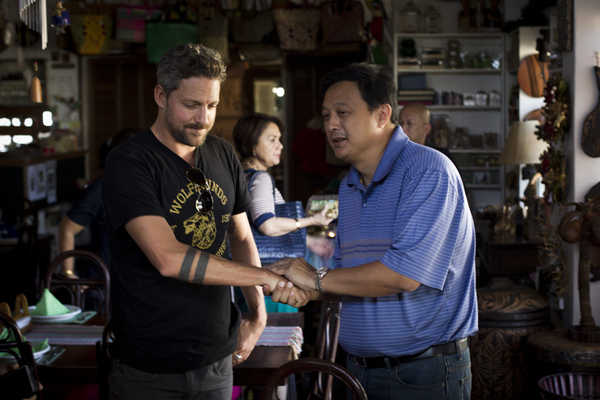
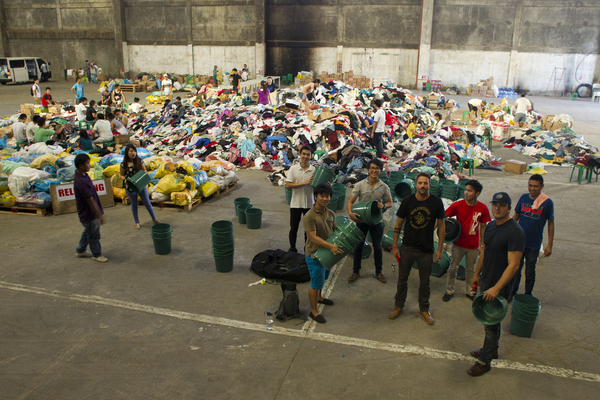
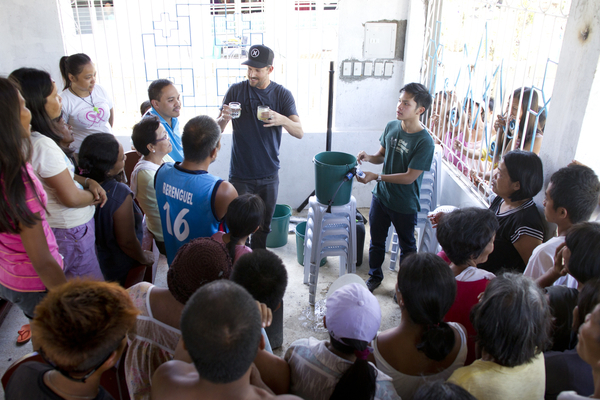
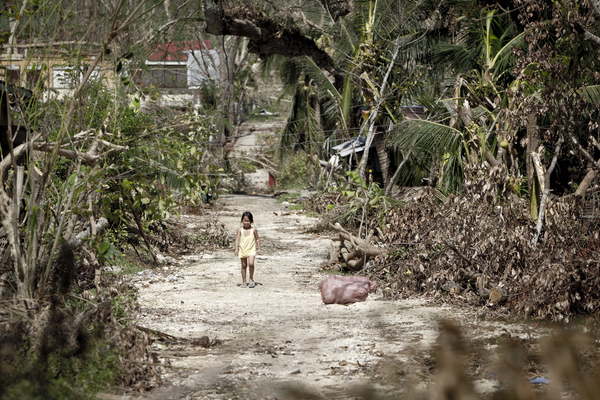
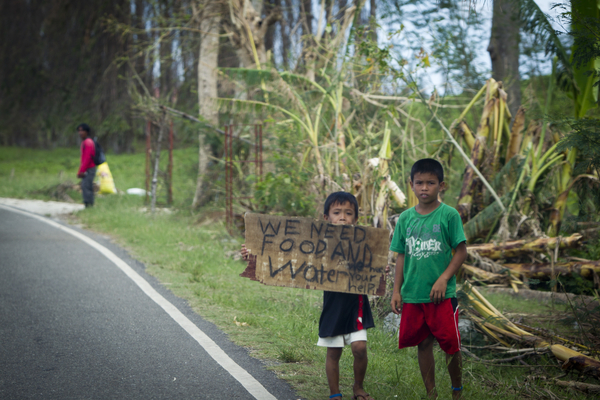
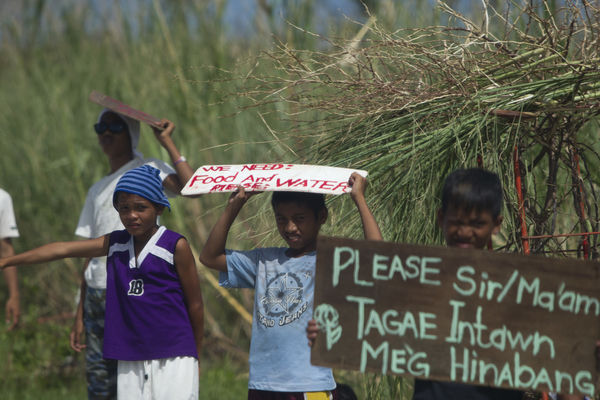
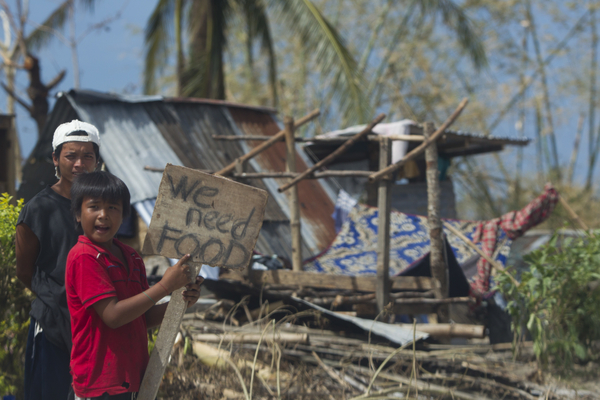
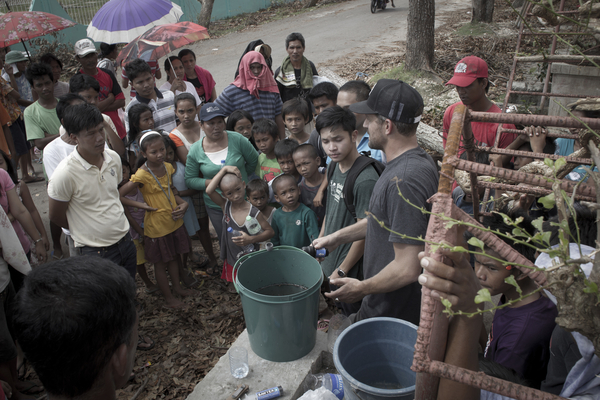
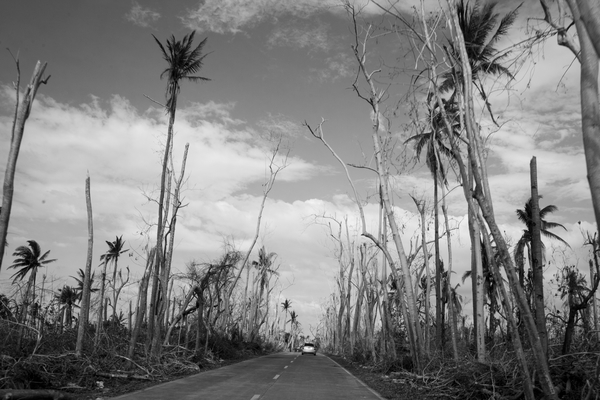
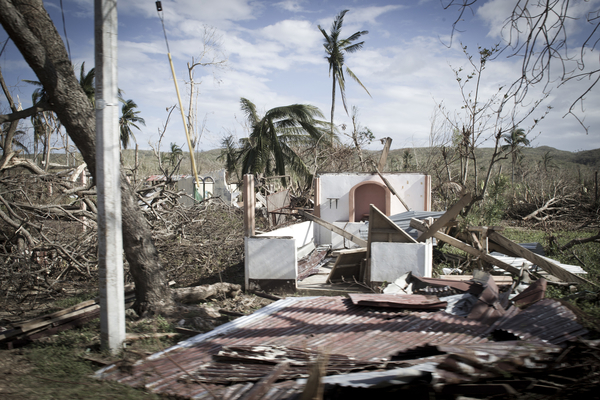
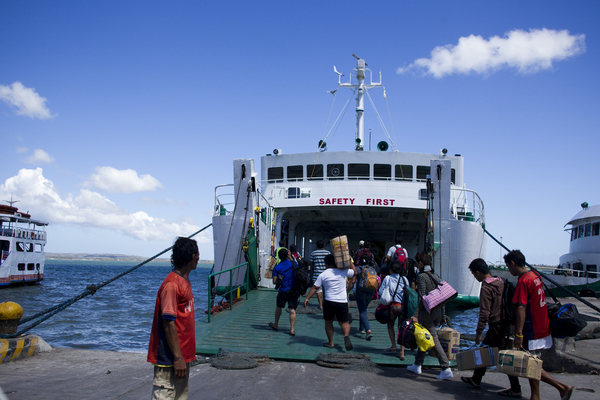
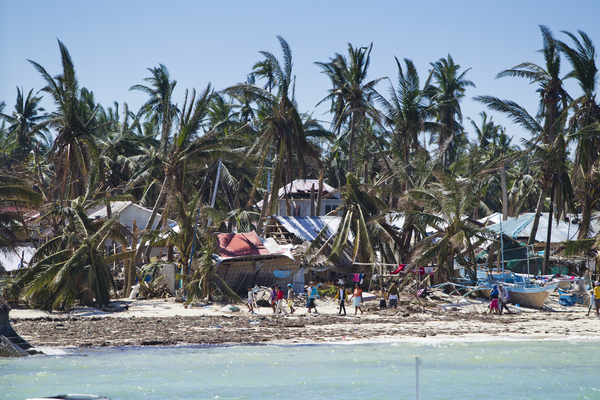
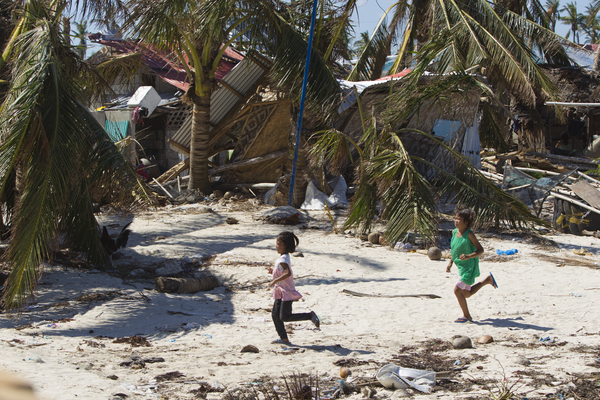
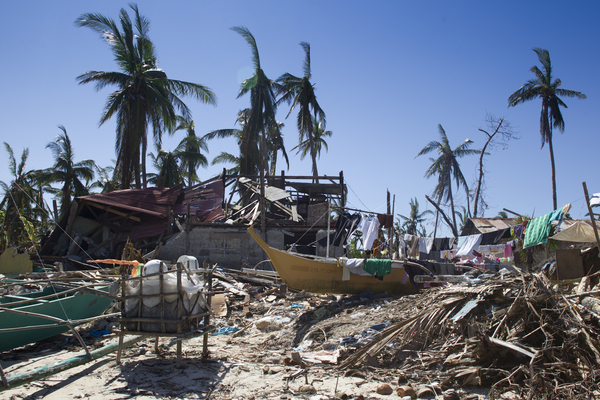
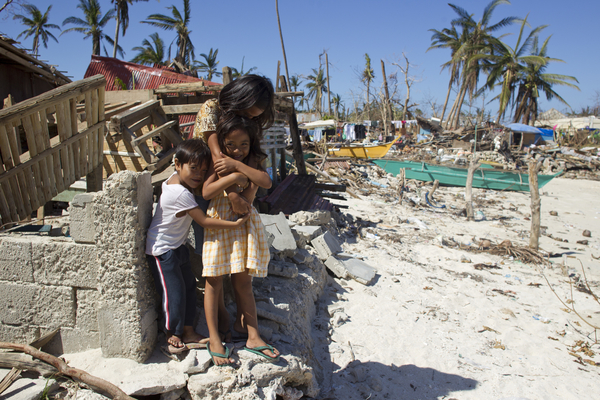
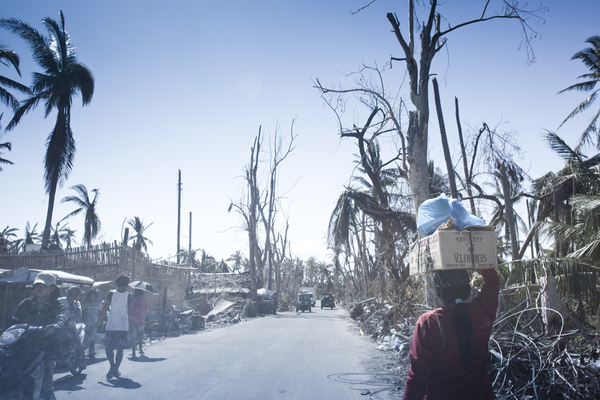
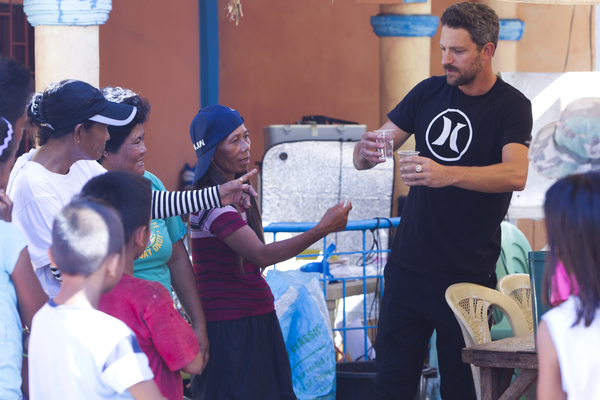
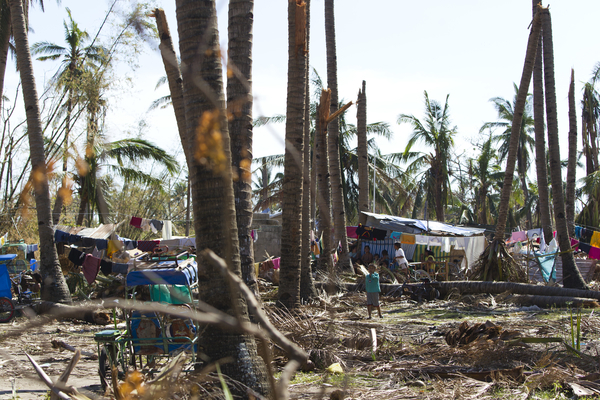
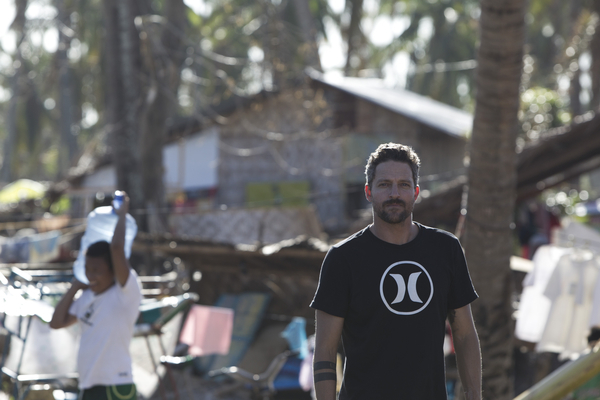
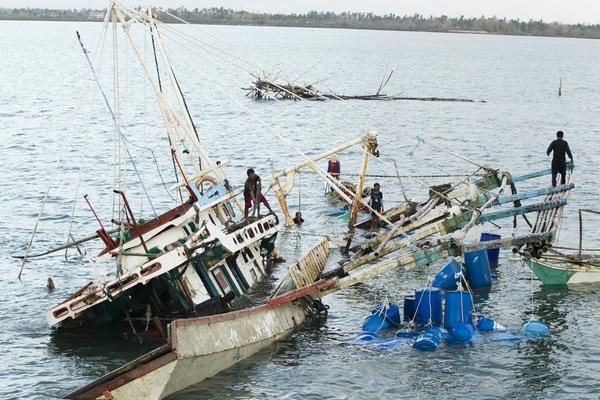
W4W began work in the Philippines in response to Typhoon Haiyan and continues to support areas with water shortages.
In 2013, the Philippines was hit by one of the most devastating typhoons ever recorded: Typhoon Haiyan. The natural disaster affected people throughout Southeast Asia and killed 6,300 people in the Philippines alone. Throughout the country, over 4.3 million people were affected. One major impact of the typhoon was its obstruction of access to clean water.
To address this problem, Jon Rose, founder of Waves for Water (W4W), arrived in the Philippines ready to distribute his organization’s water filters among “forgotten pockets,” communities that were not “the focal point of major relief efforts.” His method of distribution and relief relied on the “train-the trainer, local-based model” in which W4W organizers “empower” and “facilitate” for local people rather than decide “who gets what, when, where and how.” Two years after the typhoon, W4W established an office in the Philippines, where it is currently registered as a non-profit organization. Since 2015, W4W has built 66 rainwater catchment systems and provided over a million Filipinos with access to clean water. In December of 2021, the organization helped to address the devastation caused by Hurricane Odette in Siargao, Philippines through a partnership with Billabong. Currently, W4W is providing aid for those impacted by Tropical Depression Agaton, which has displaced 1.9 million people in Visayas and Mindanao, Philippines. You can contribute to this specific effort here.
W4W’s humanitarian efforts are not limited to the Philippines. Since its inception in 2009, the organization has made an impact in 44 countries, including Mozambique, Ecuador, Sierra Leone and Chile, and has helped 3.75 million people gain reliable access to clean drinking water. W4W currently has 24r active programs helping to address water access issues. These programs seek to provide aid to citizens of Ukraine, Australia, Haiti and Guatemala. You can learn more and help out here.
Jon Rose
As a pro surfer of 13 years, Jon Rose traveled the world in pursuit of perfect waves. It was this passion that led him to development of Waves for Water in 2009. He hopes to see W4W enlist and empower travers to help solve the world water crisis.
VIDEO: In Morocco—From Casablanca to the Sahara
Morocco is a heady mix of languages, cultures, religions, ancient traditions and modern sensibilities. It conjures up images of mint tea and tagine, date plantations and minarets, labyrinth medinas and pungent spice talls. Here's some shots that were taken during a road trip from Morocco starting from Fez to Chefchaouen to Casablanca to Marrakech and all the way to Sahara desert.
















